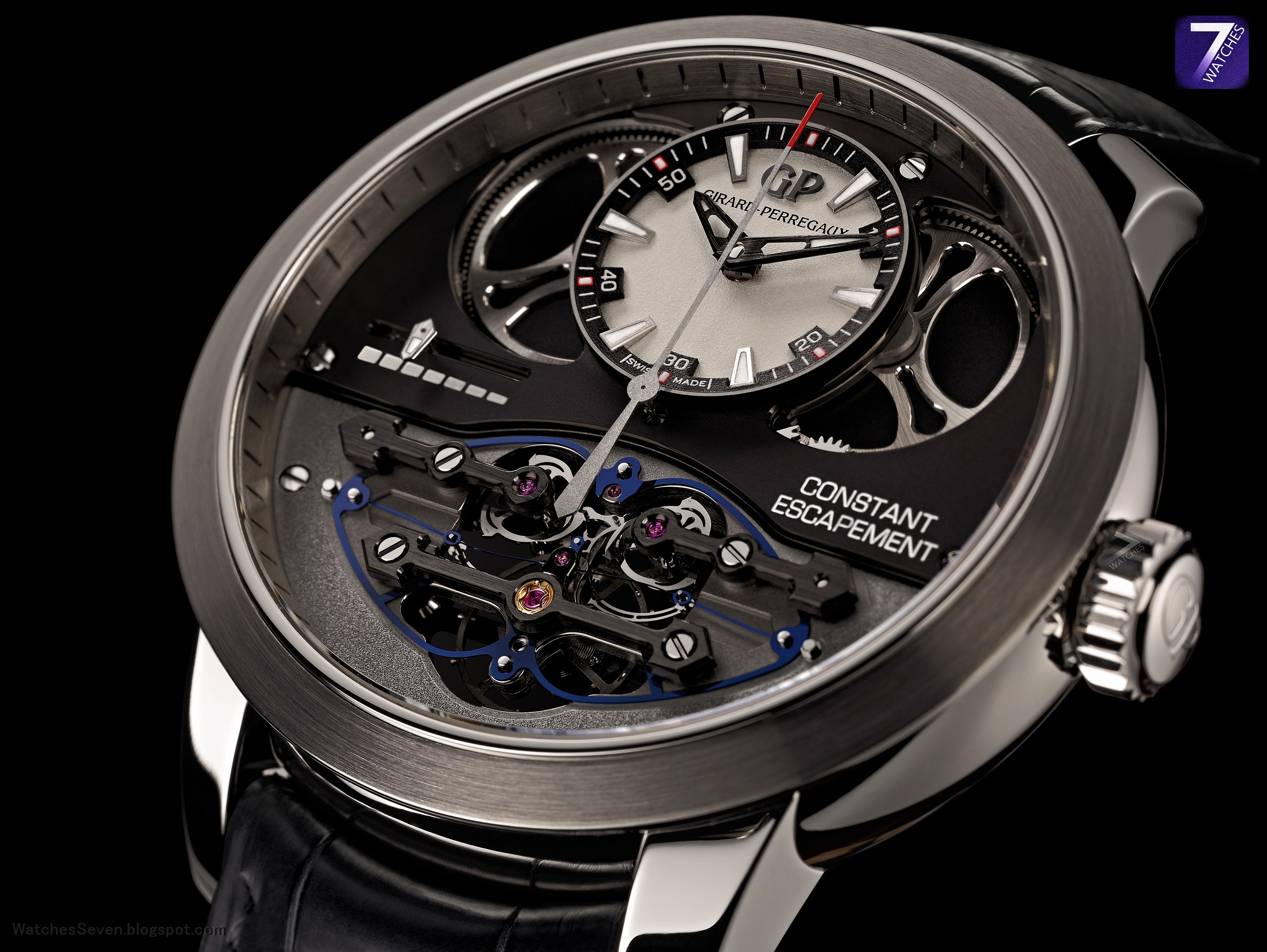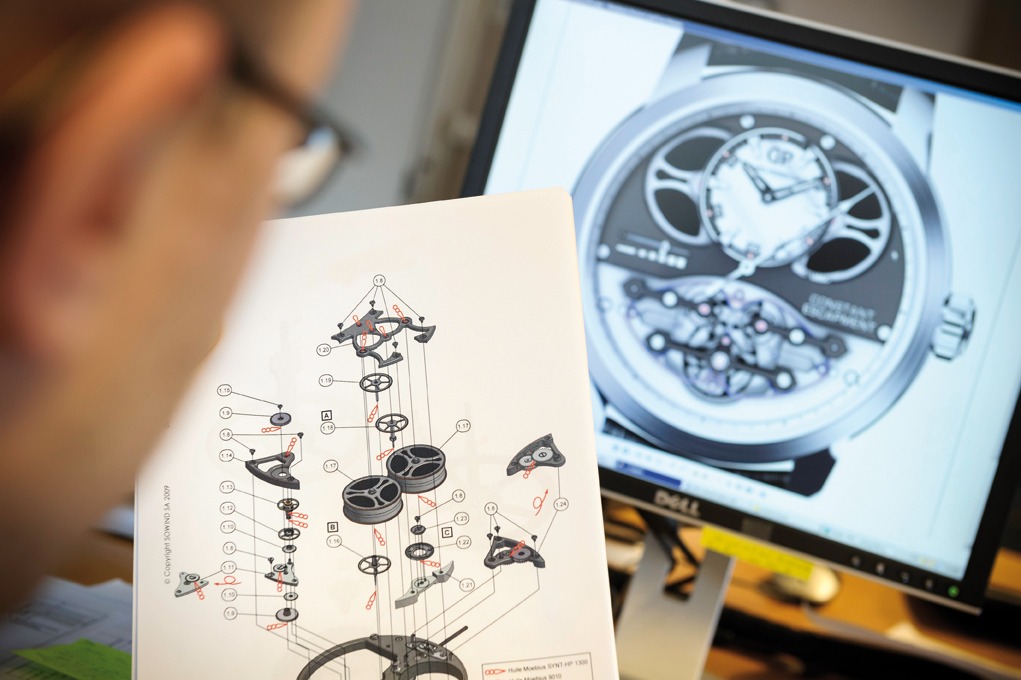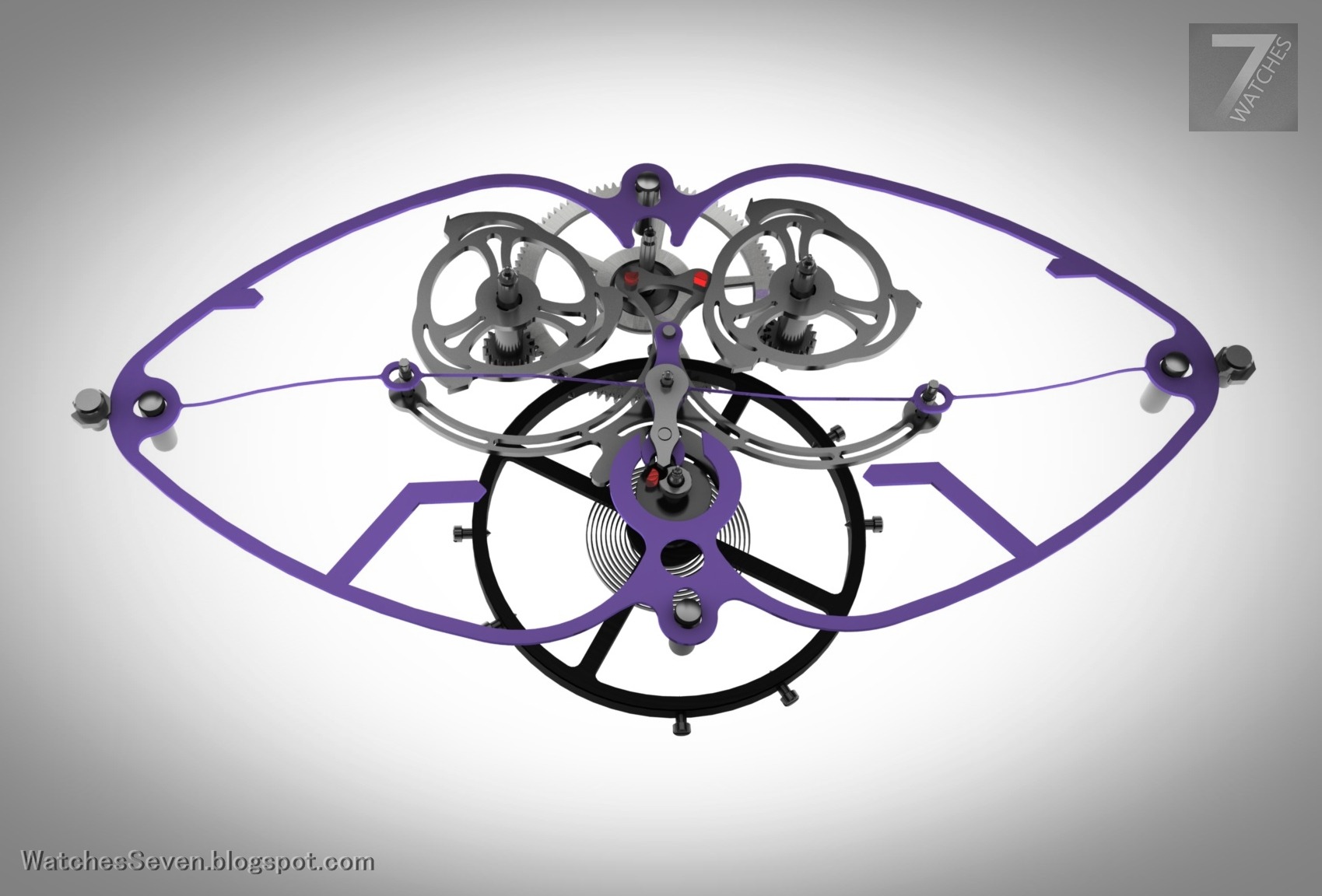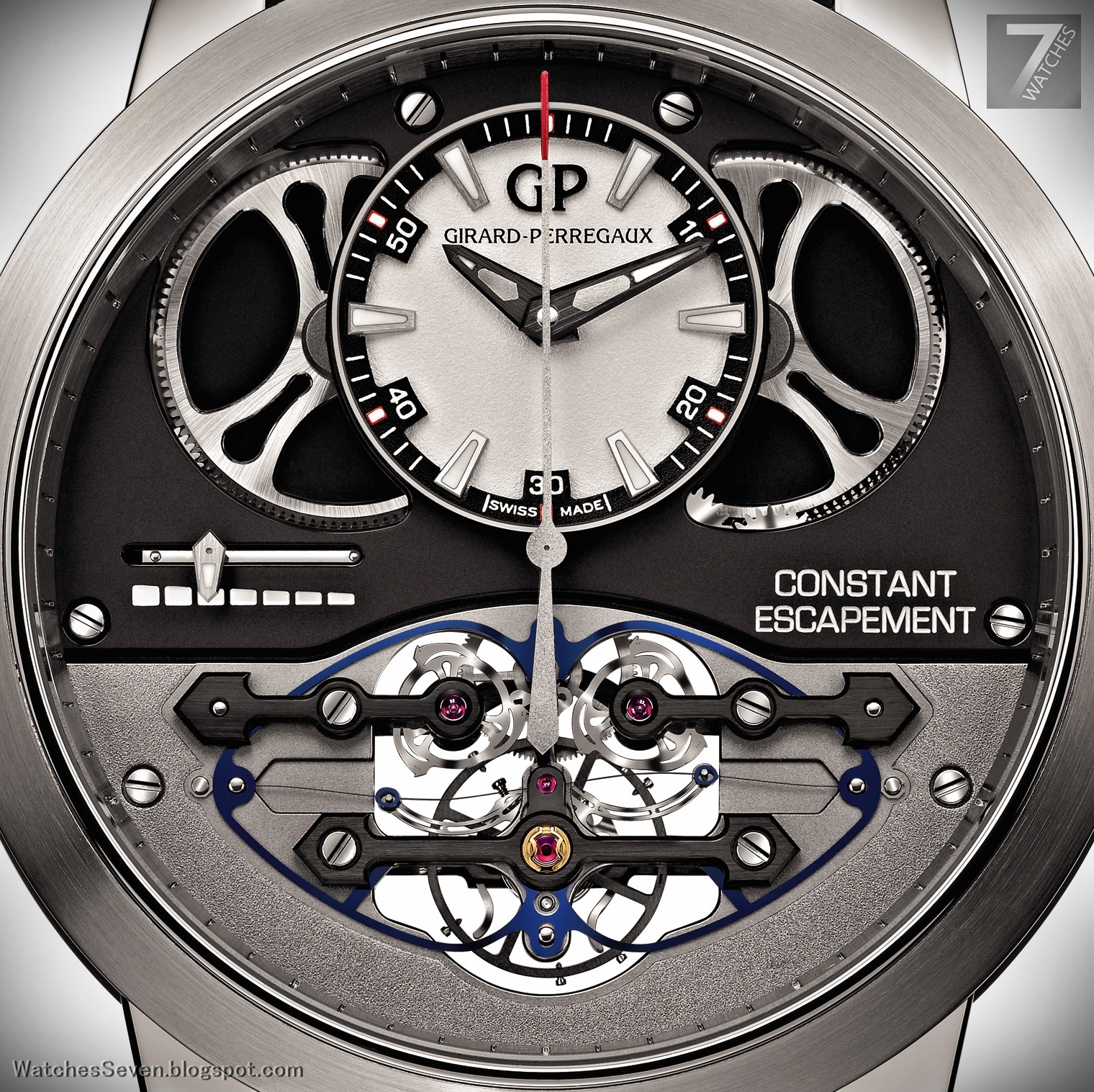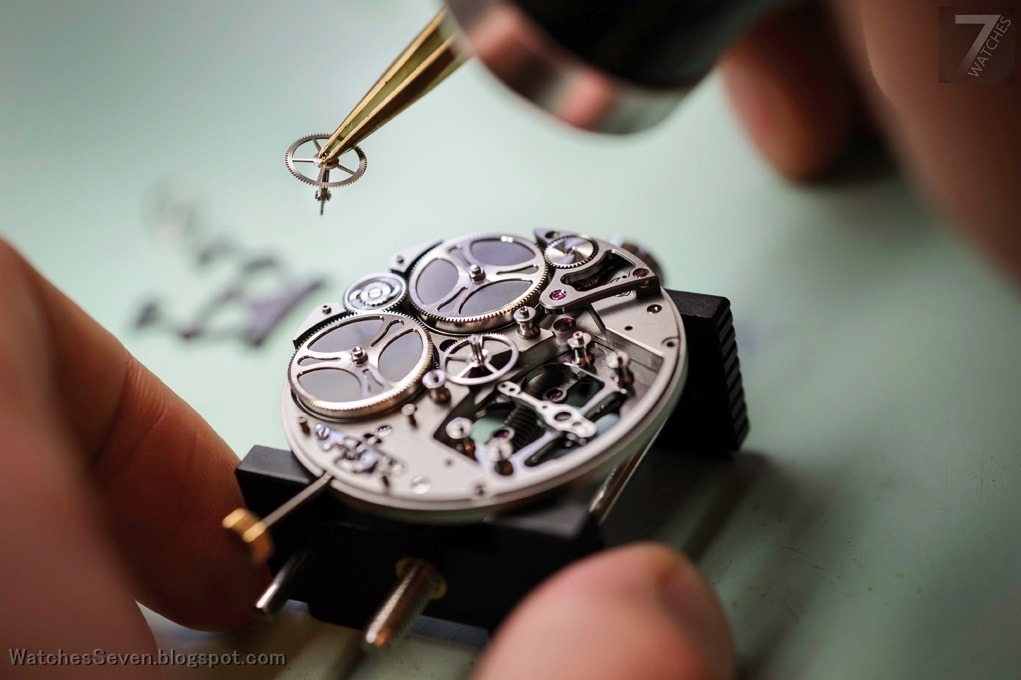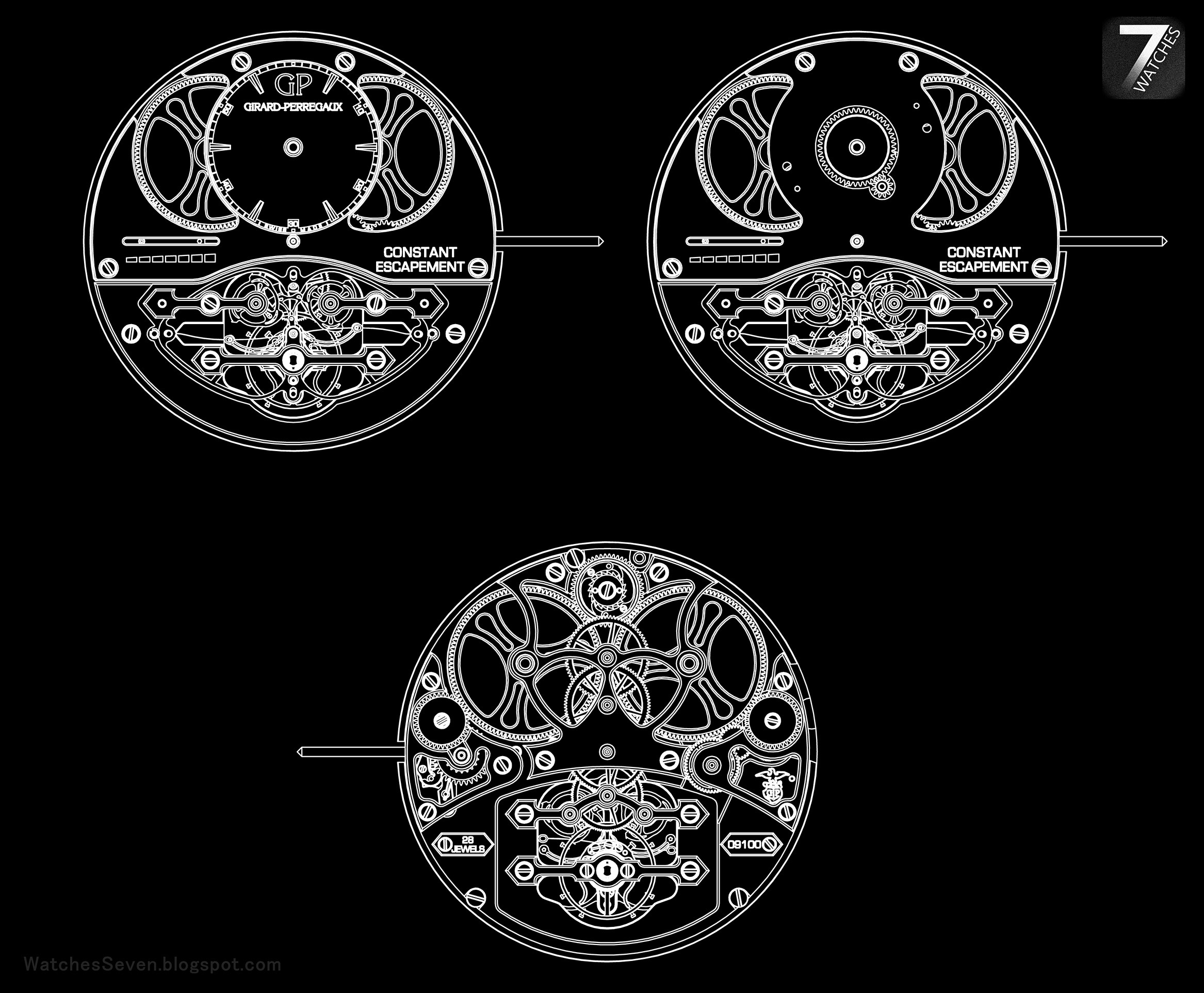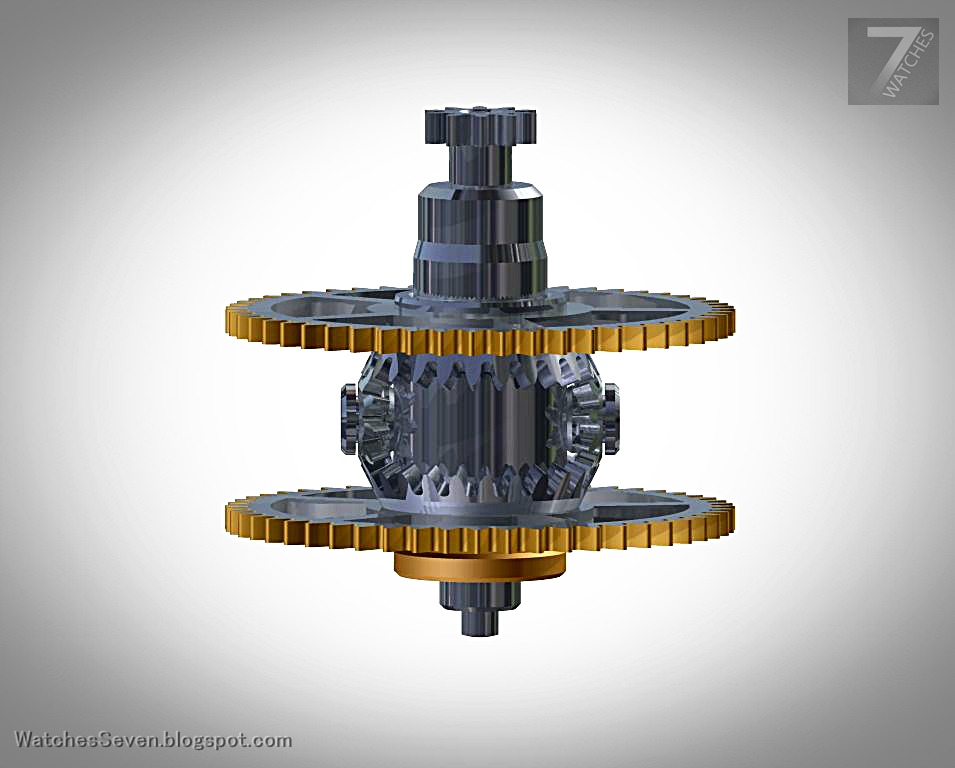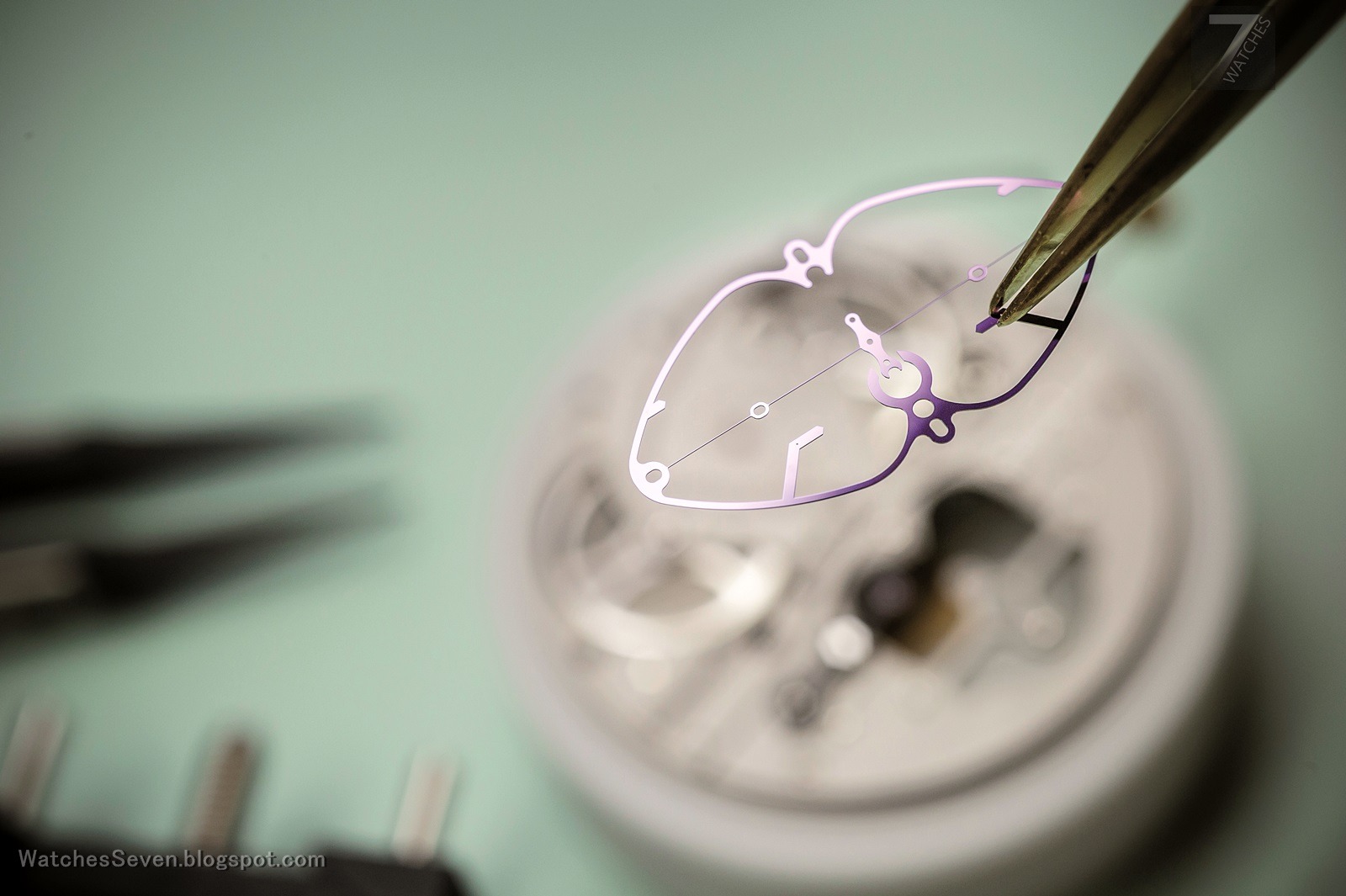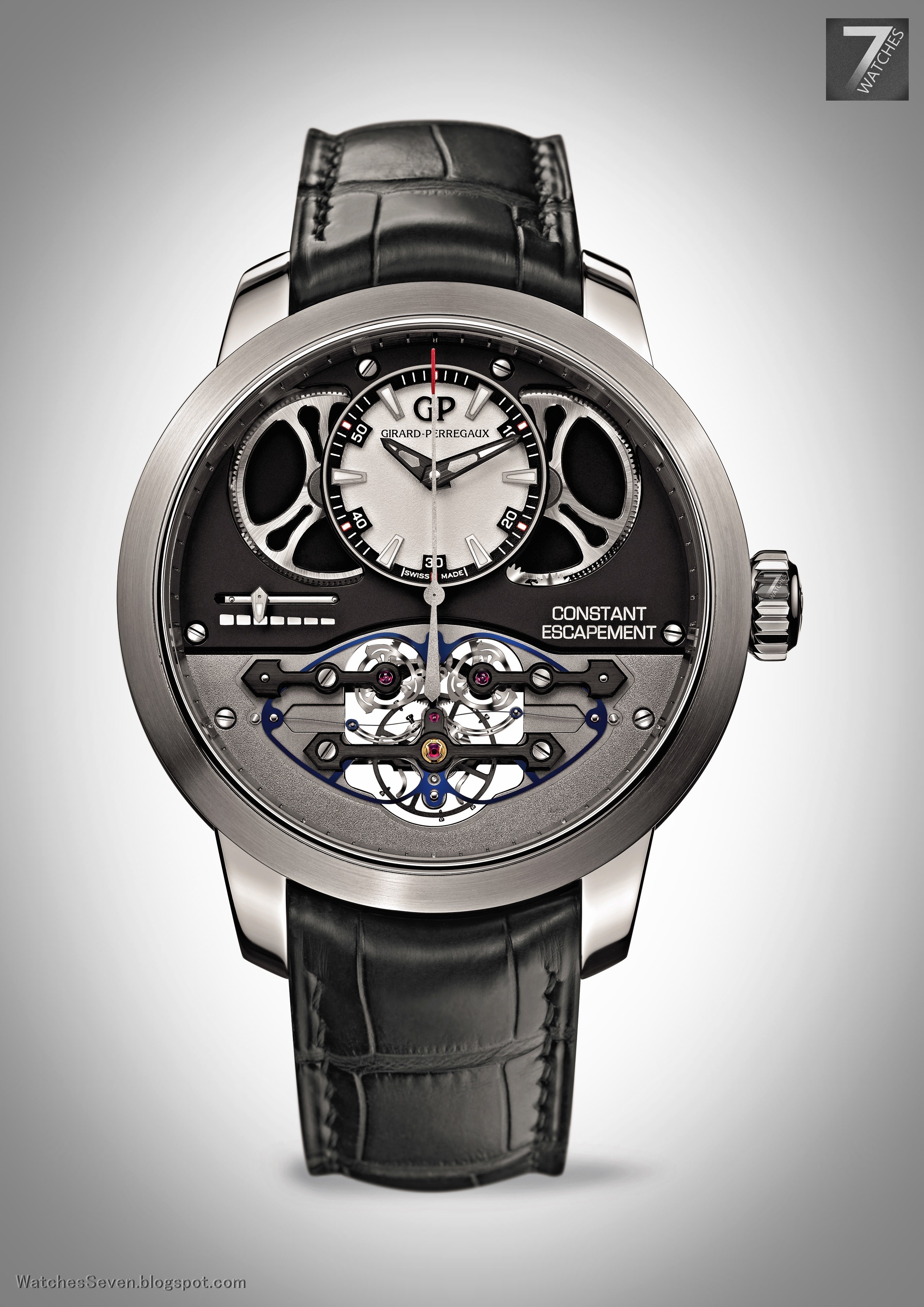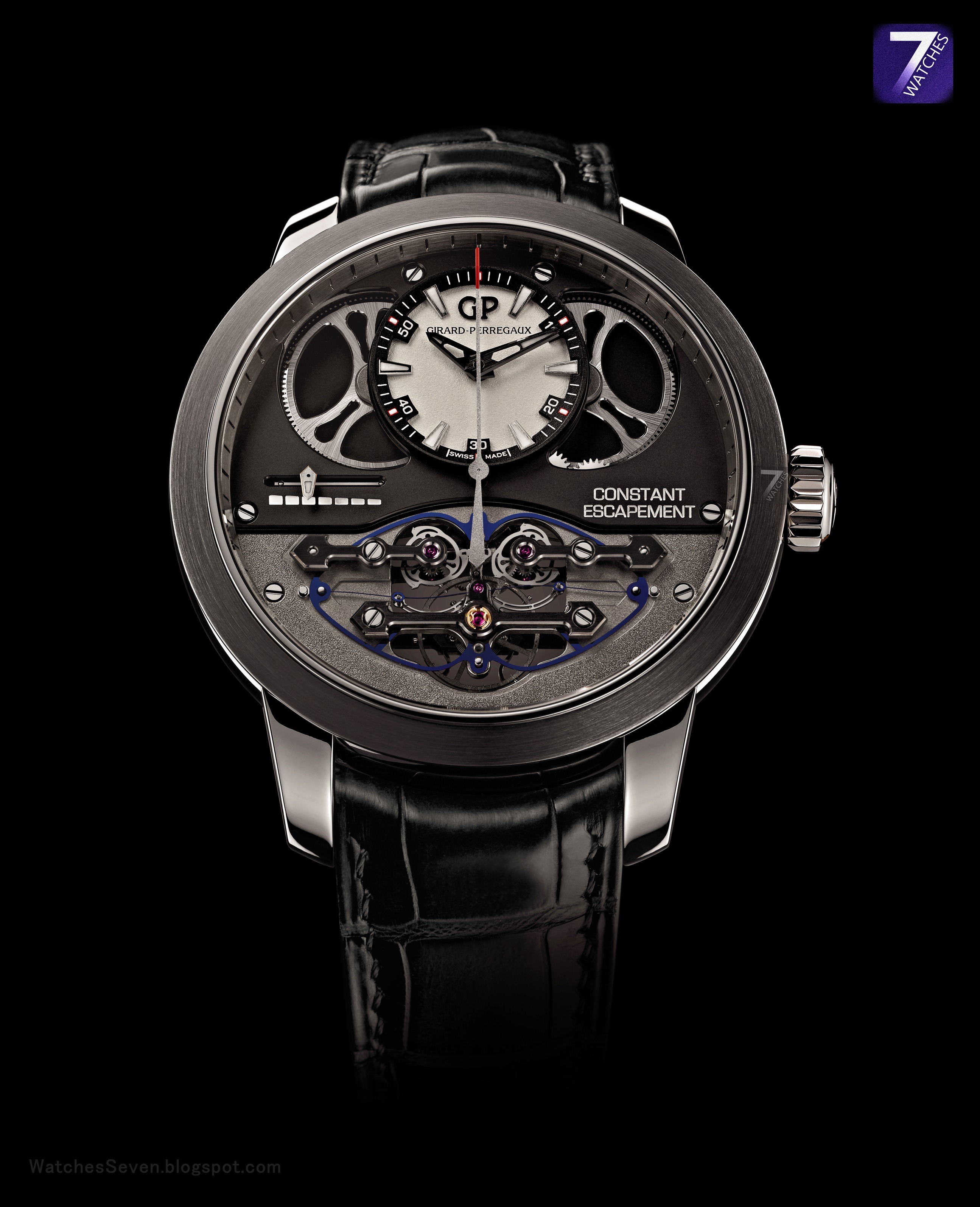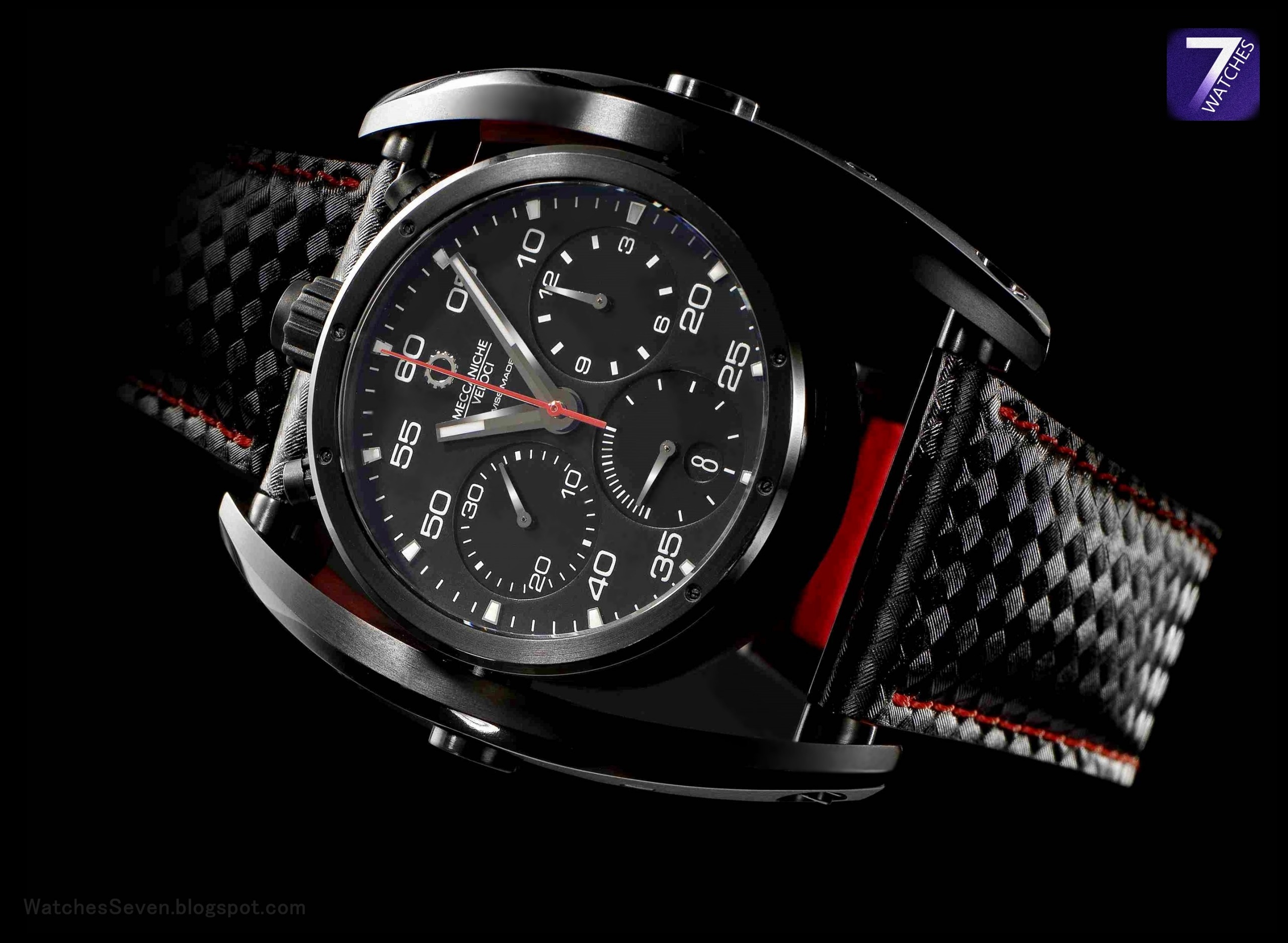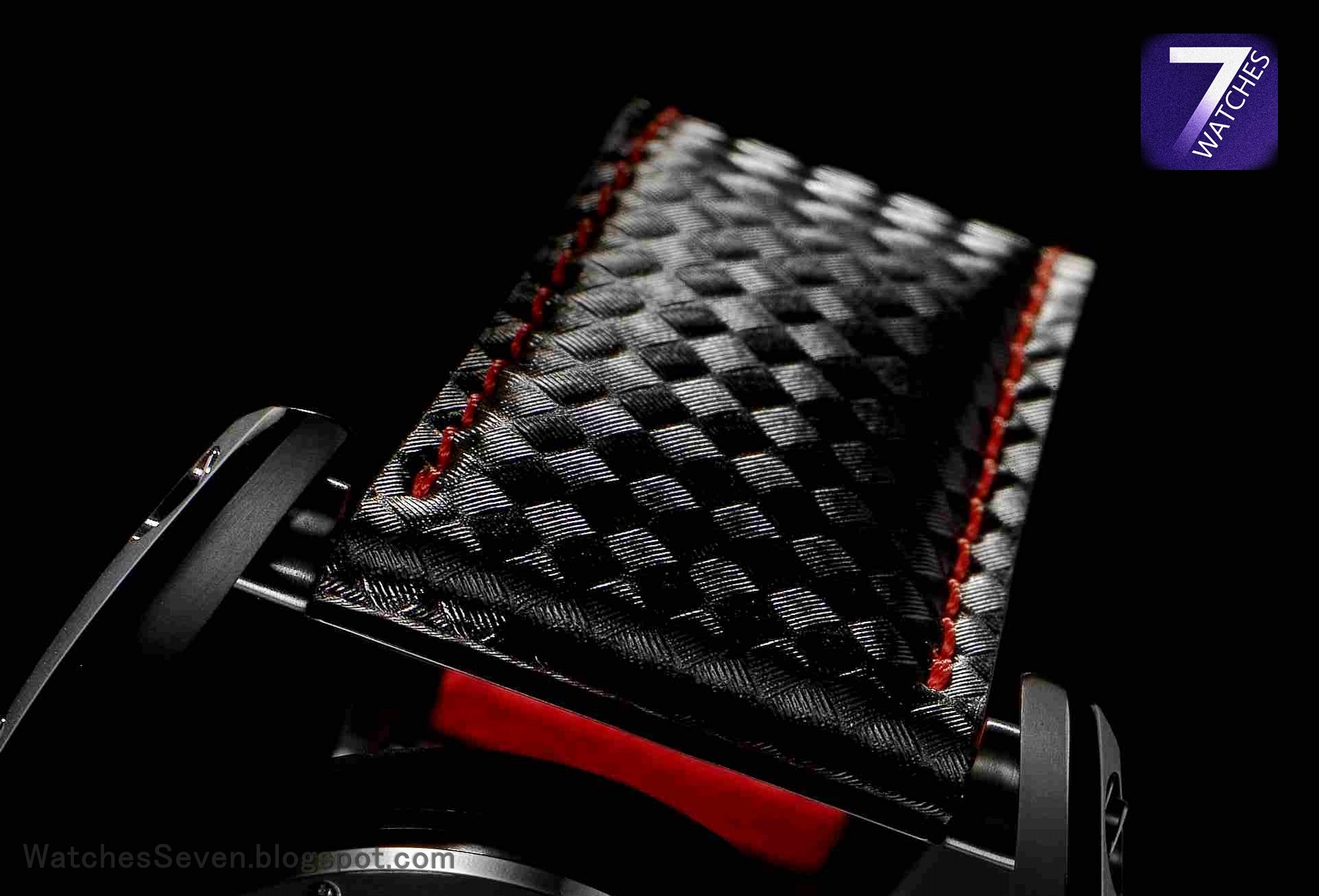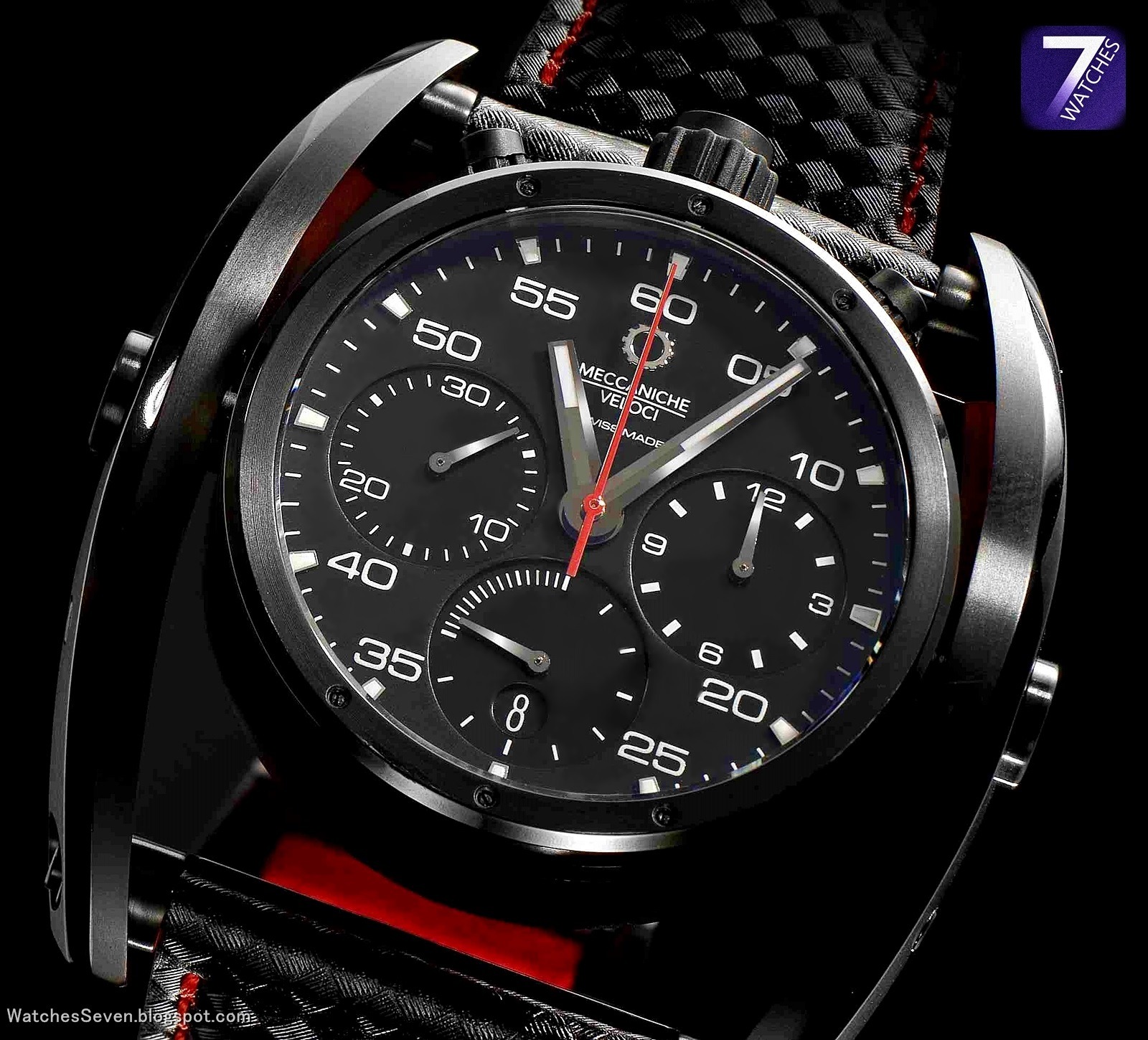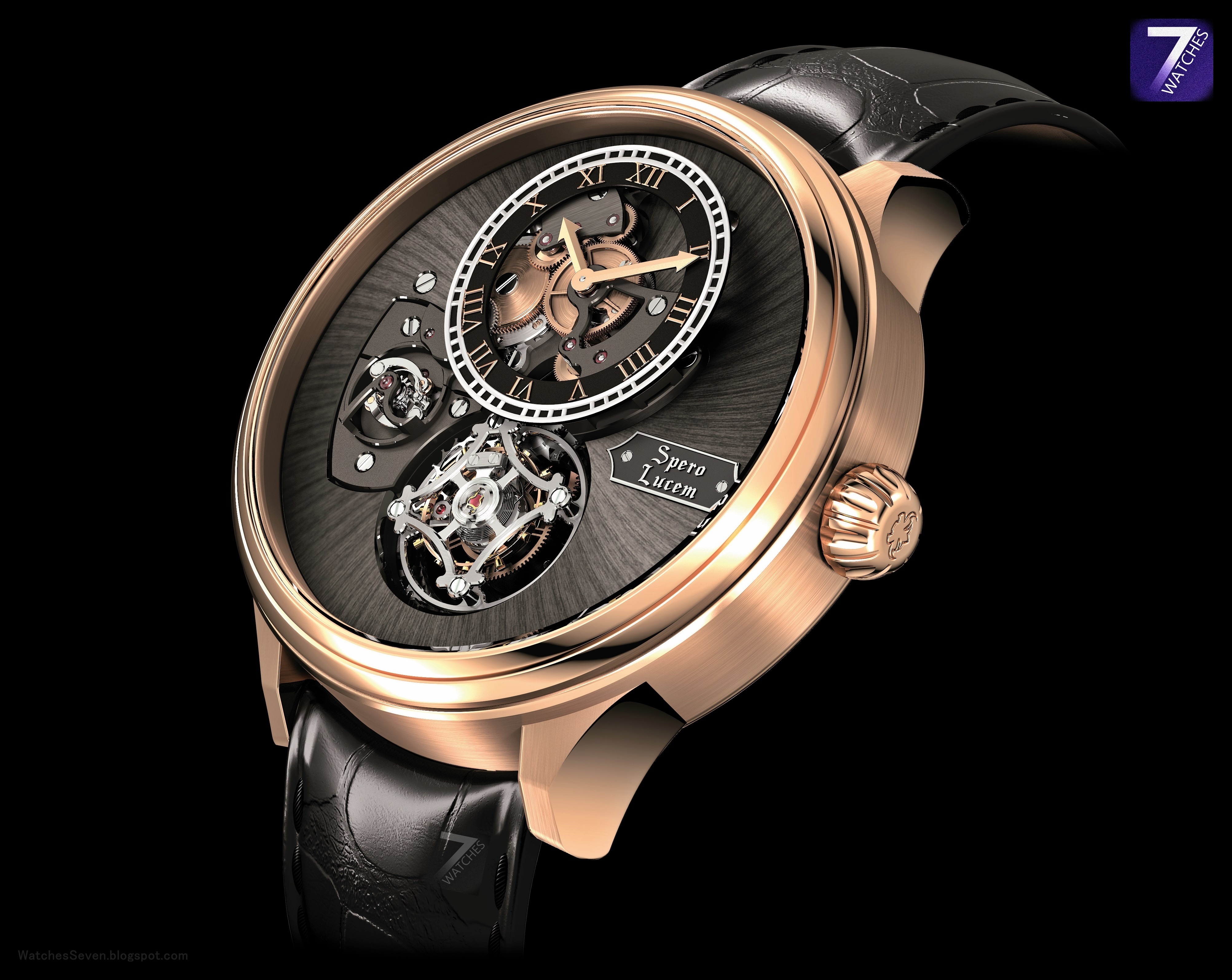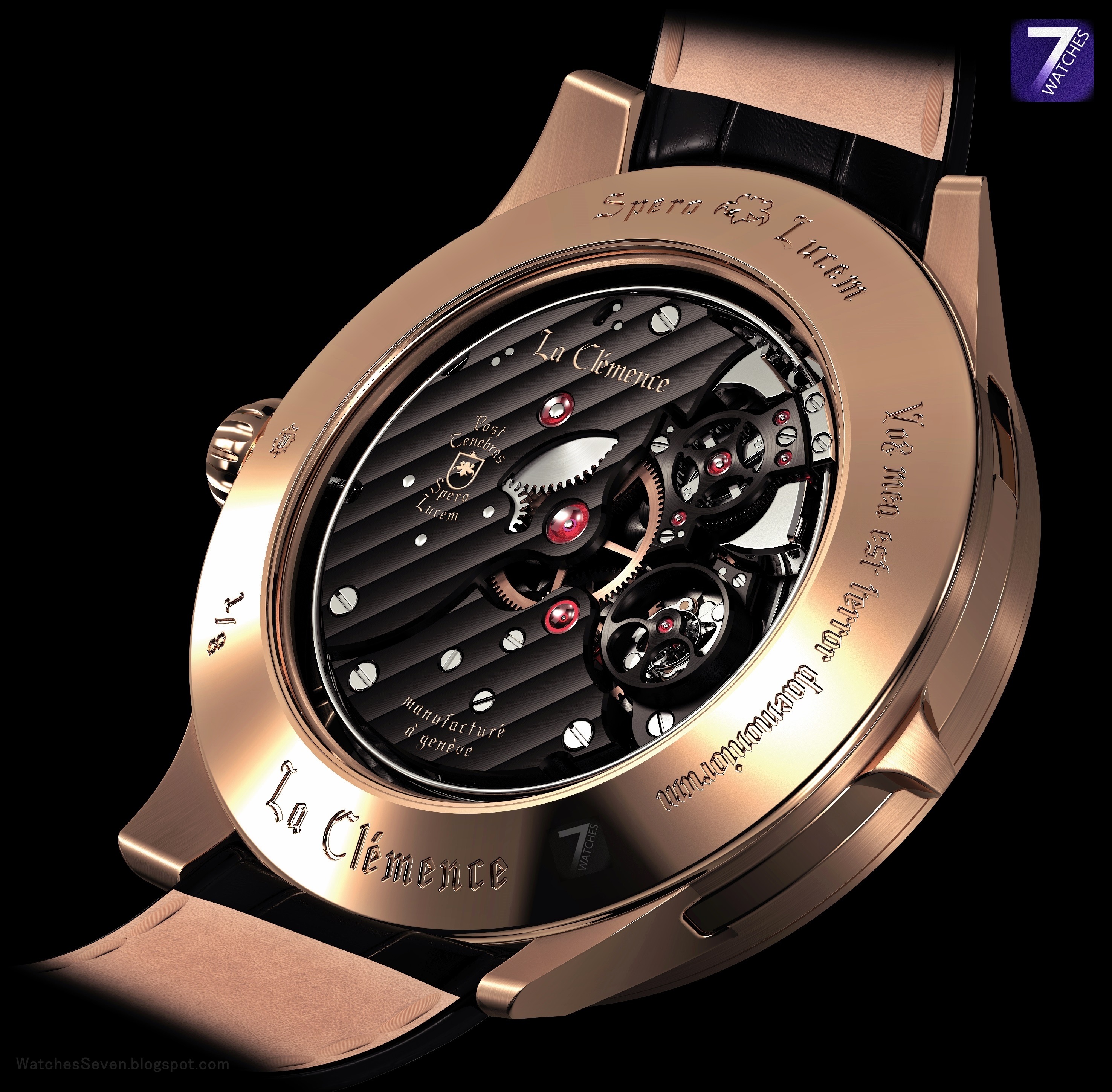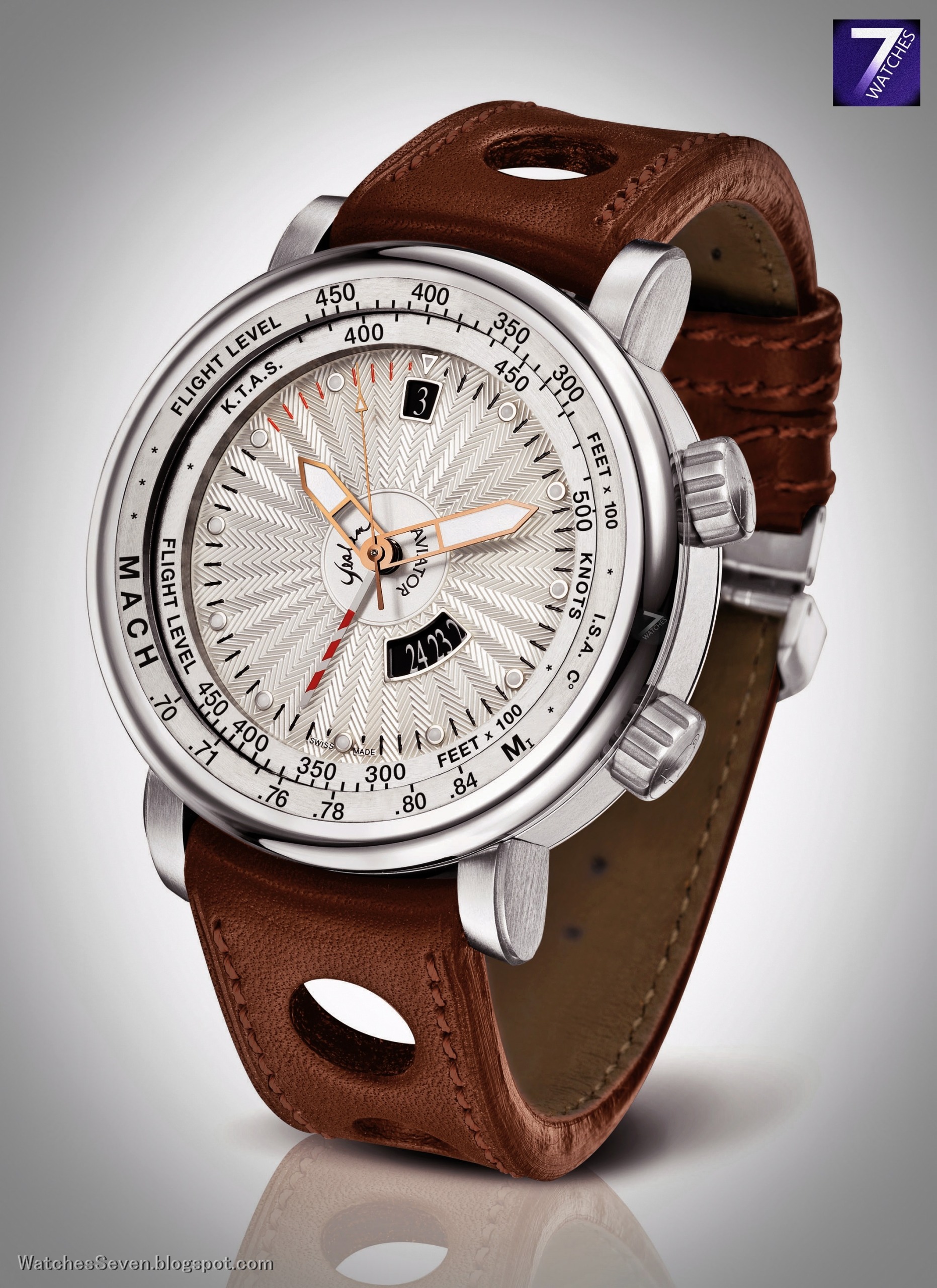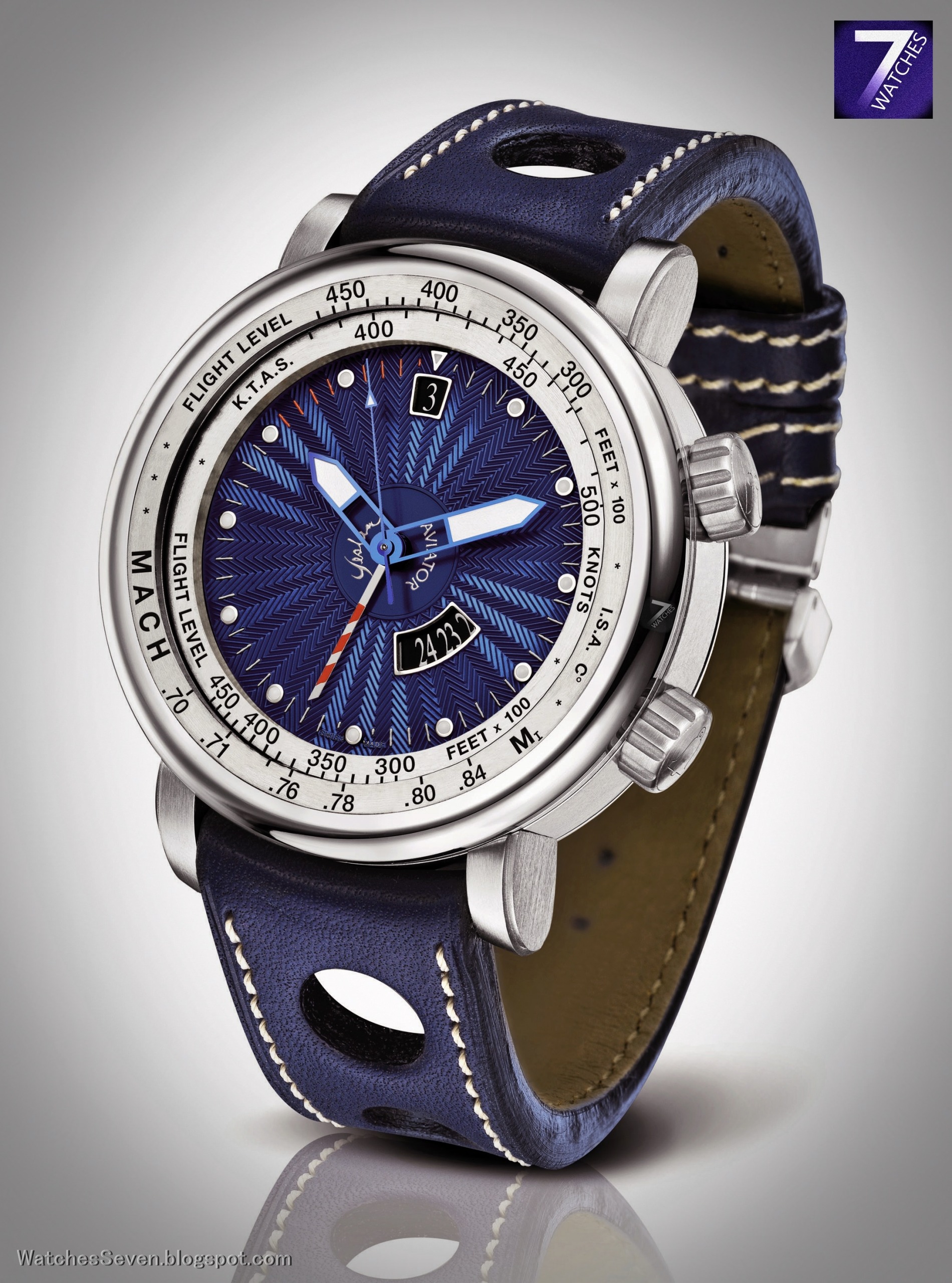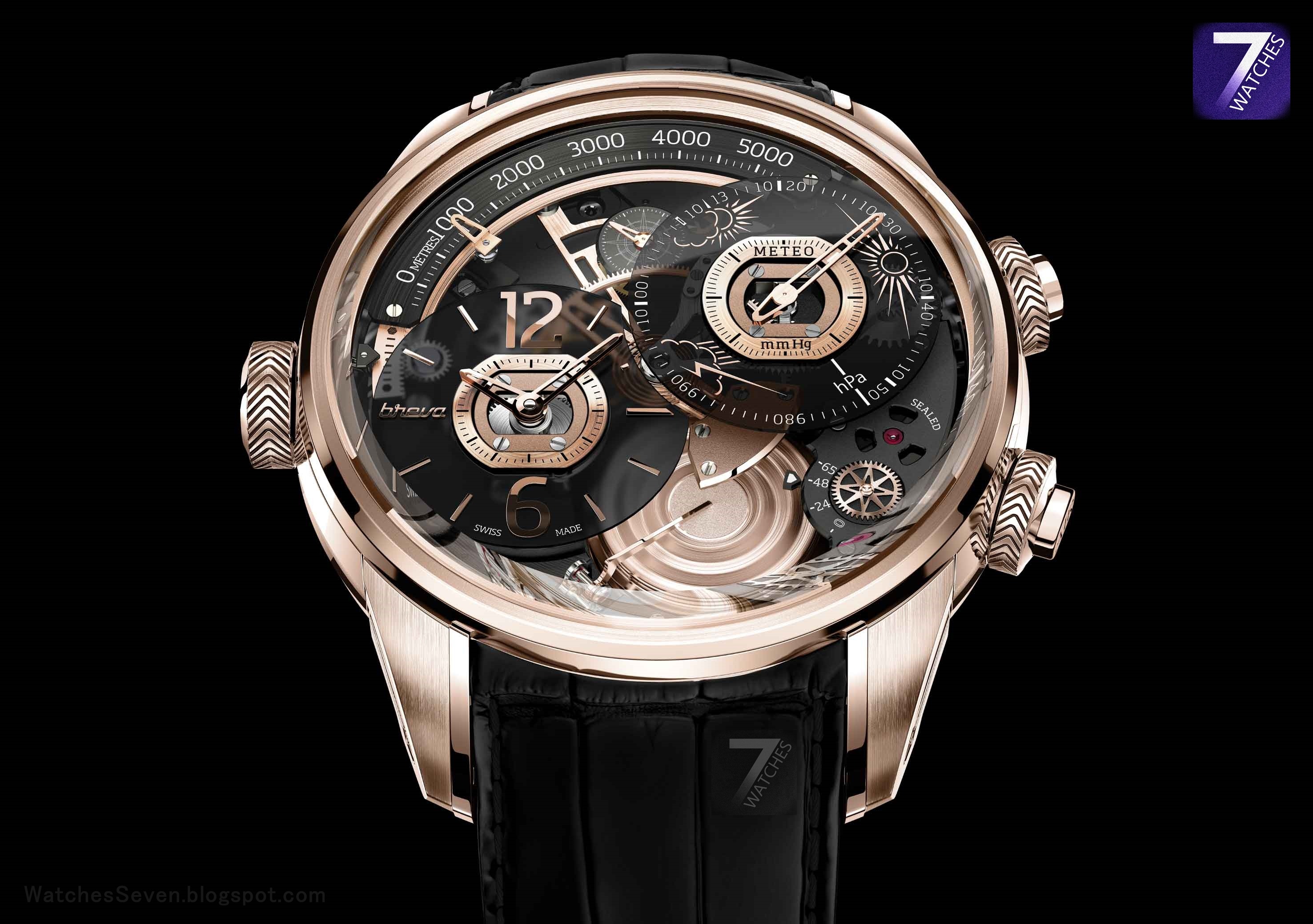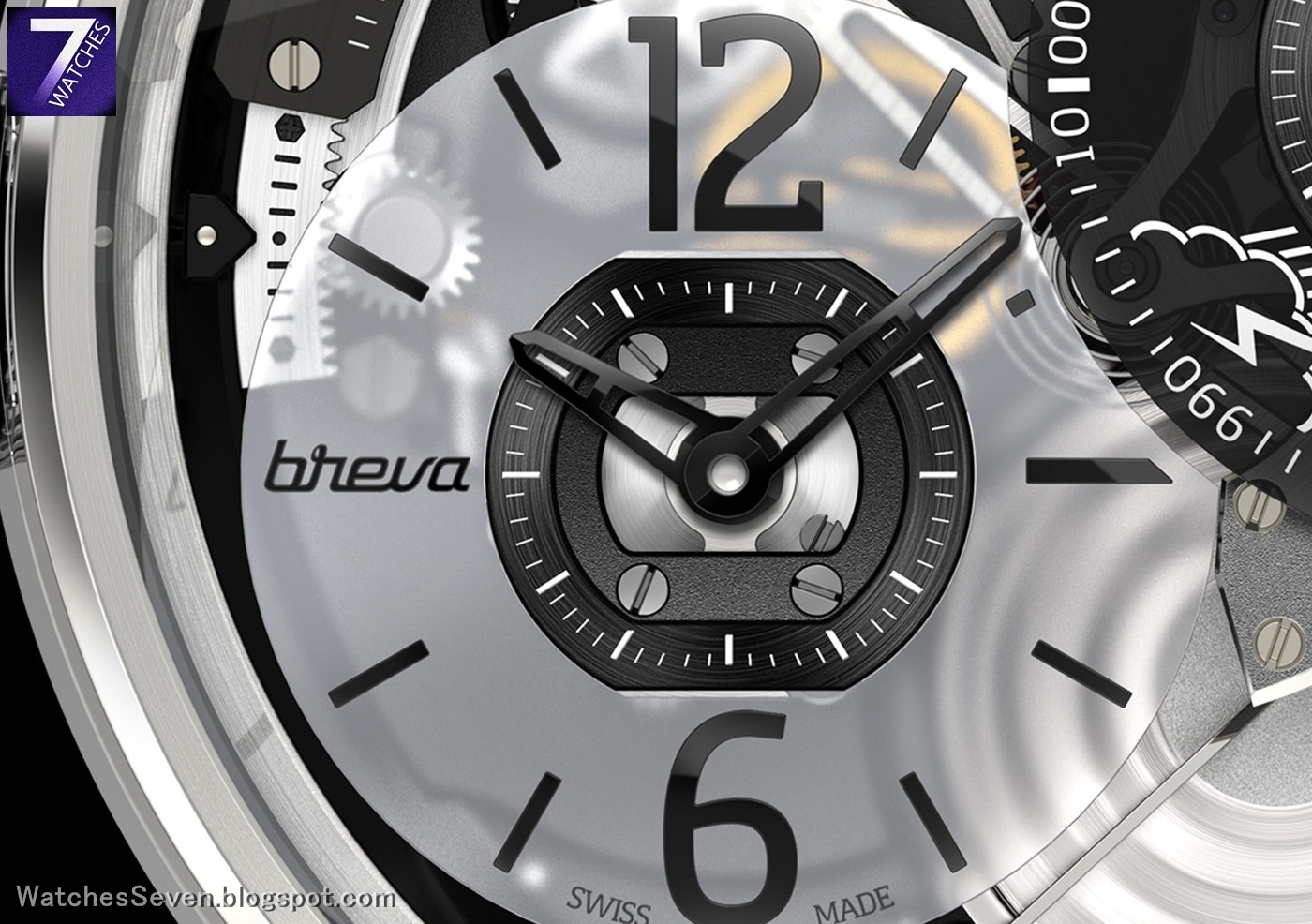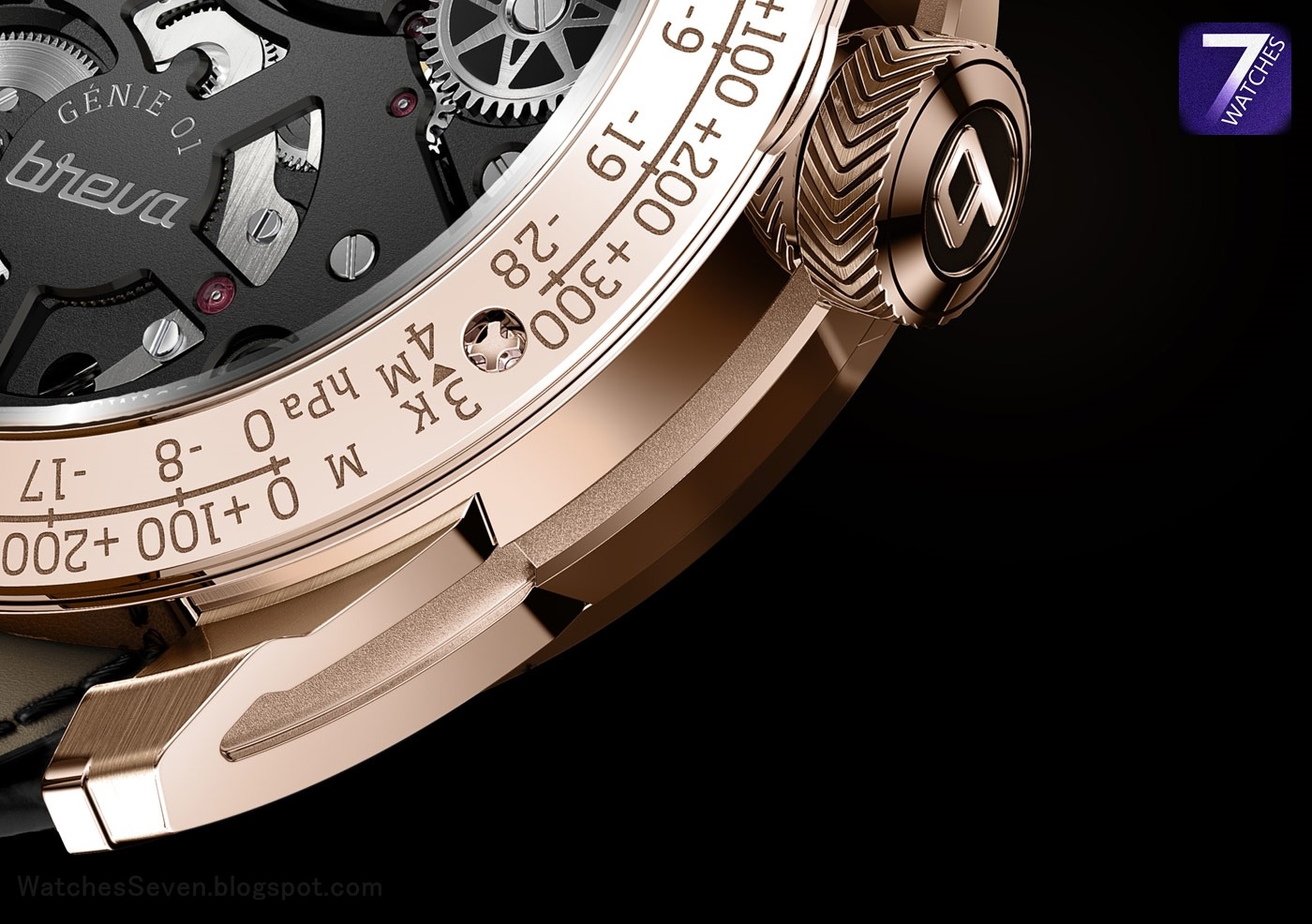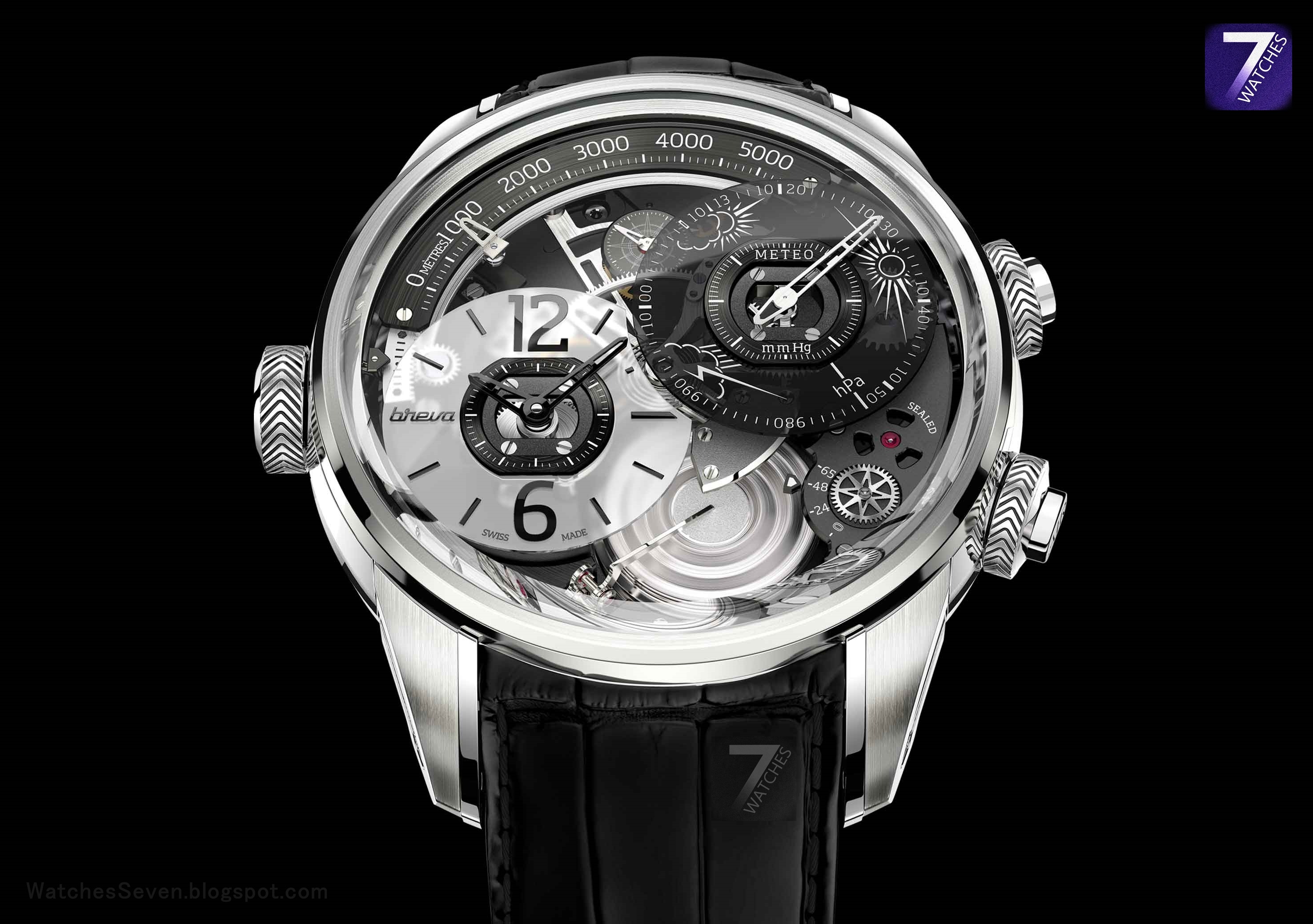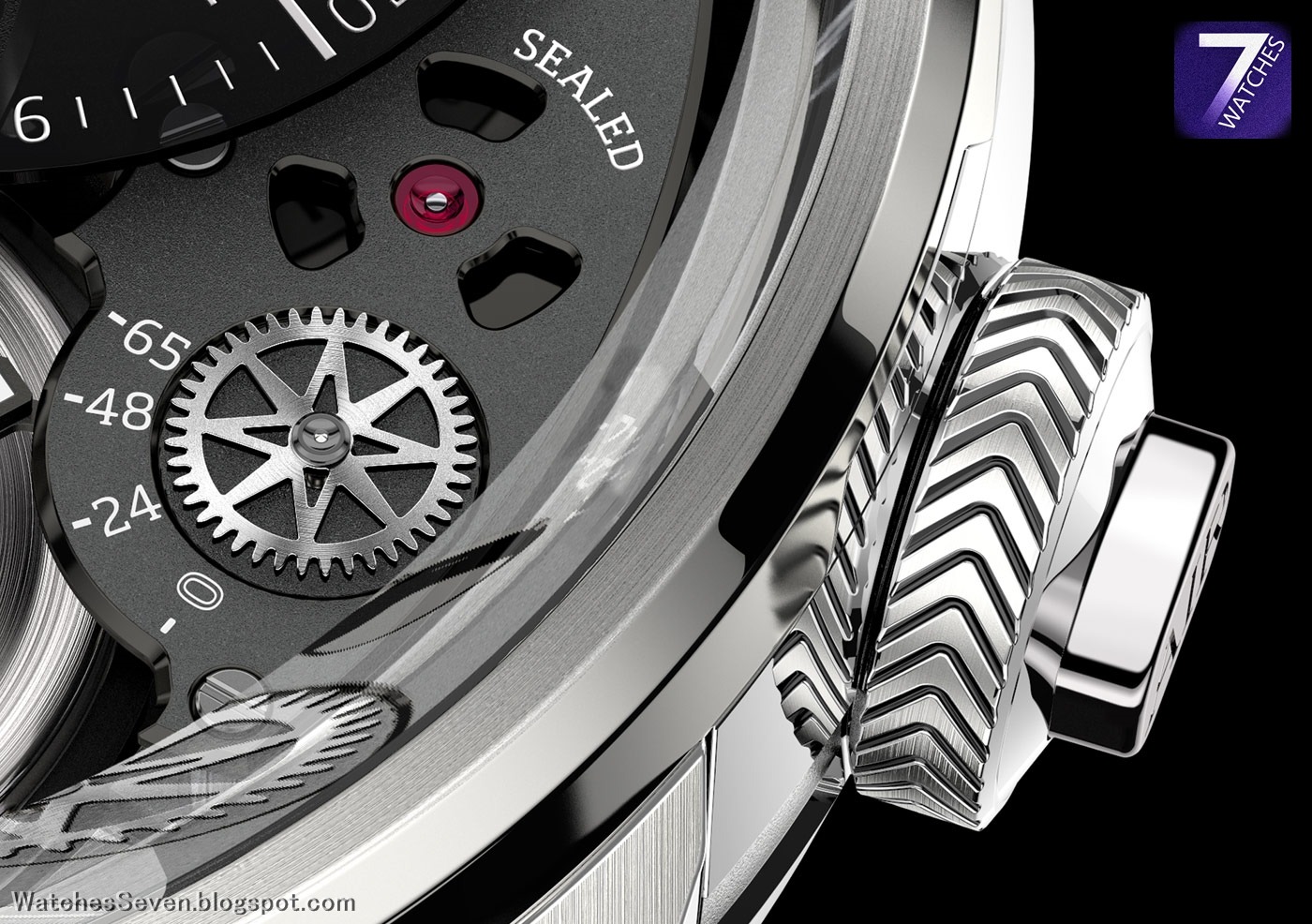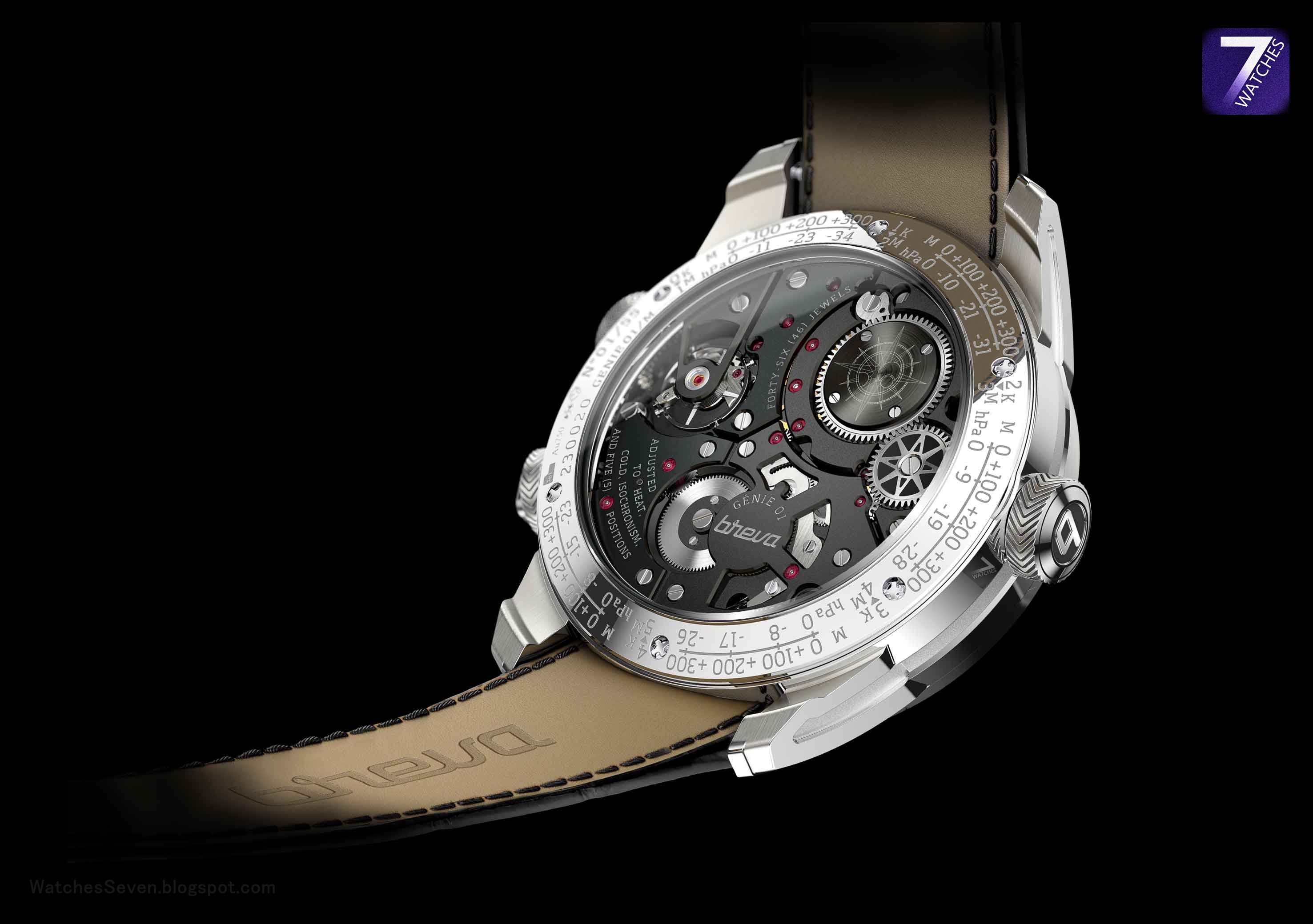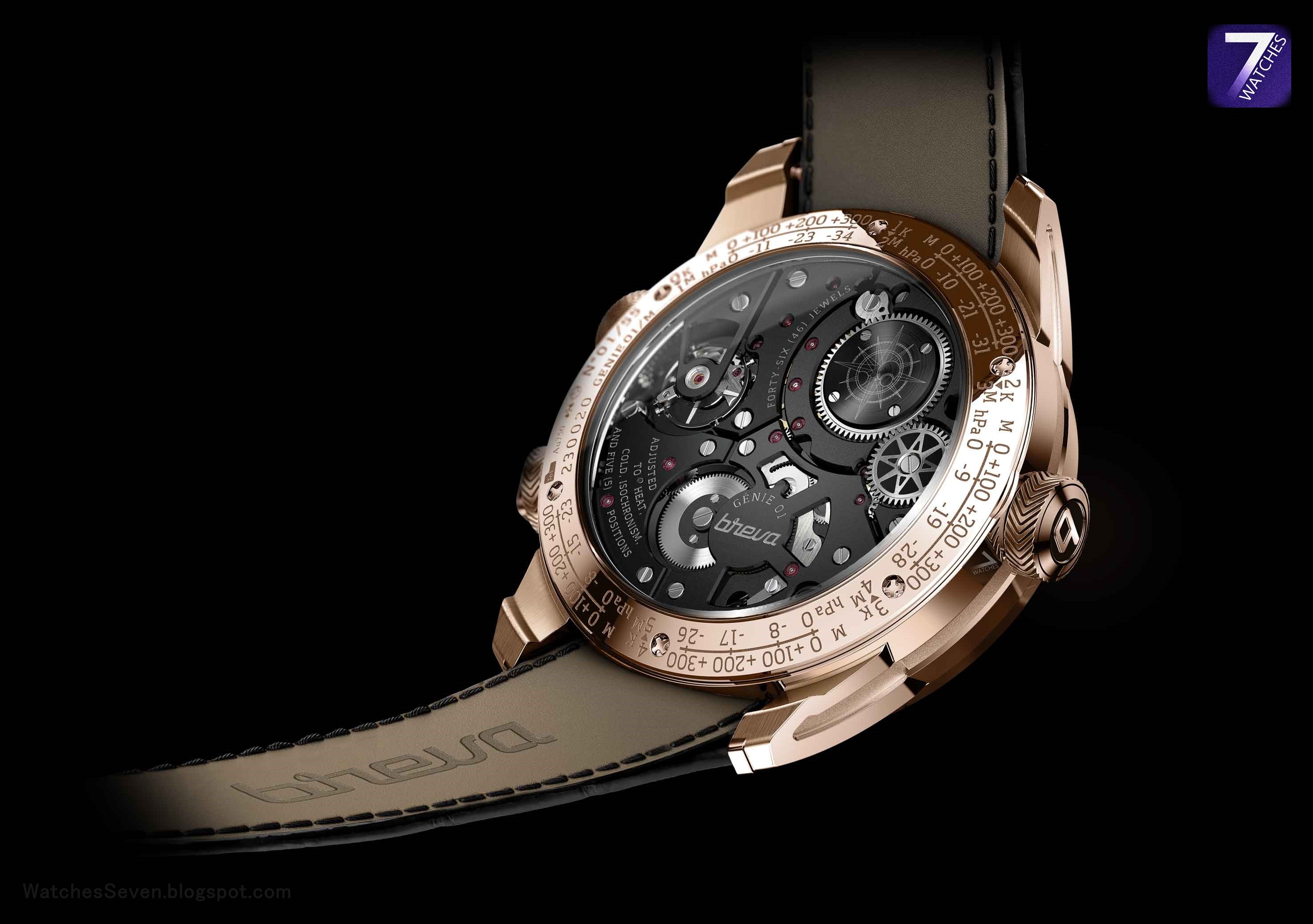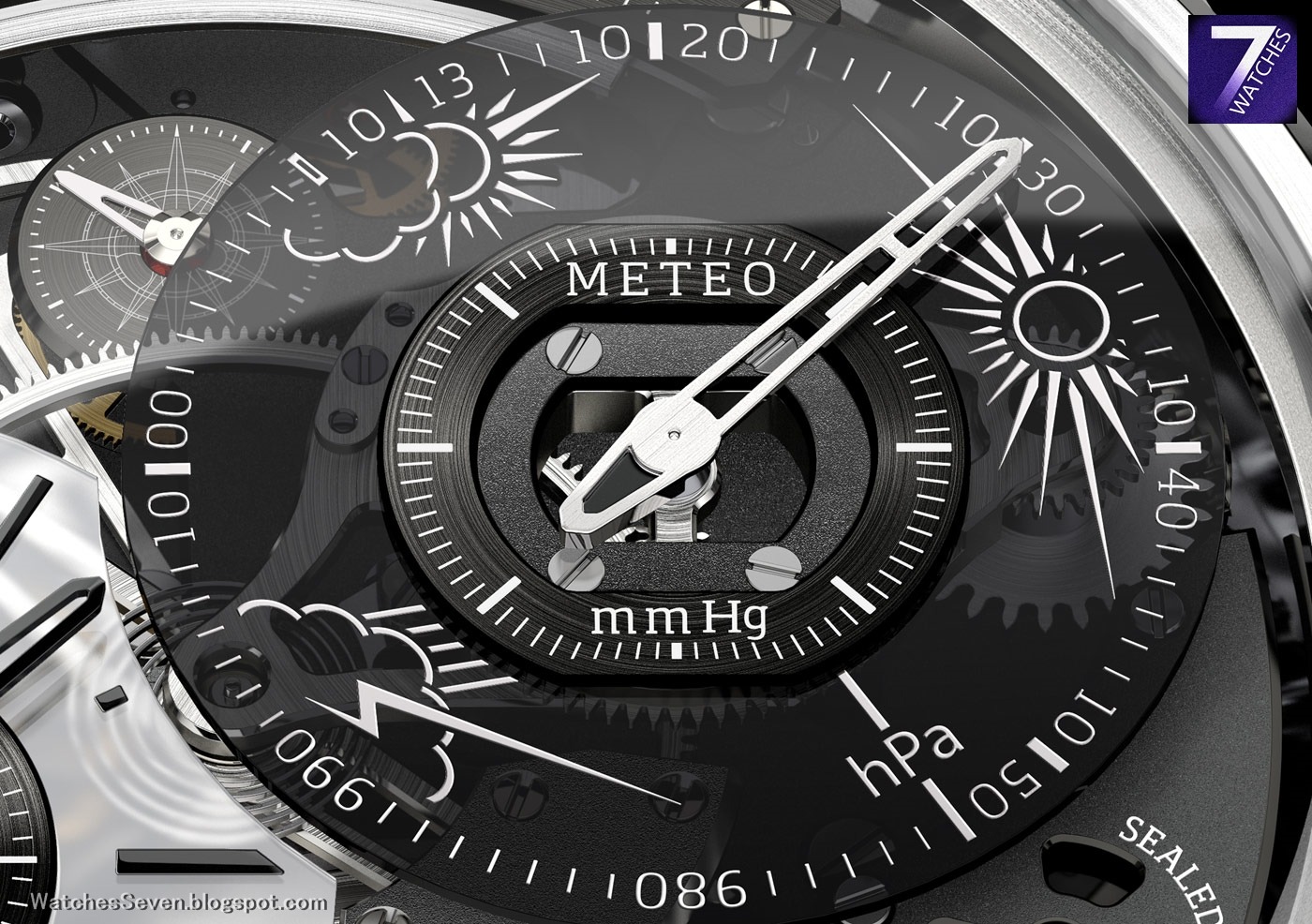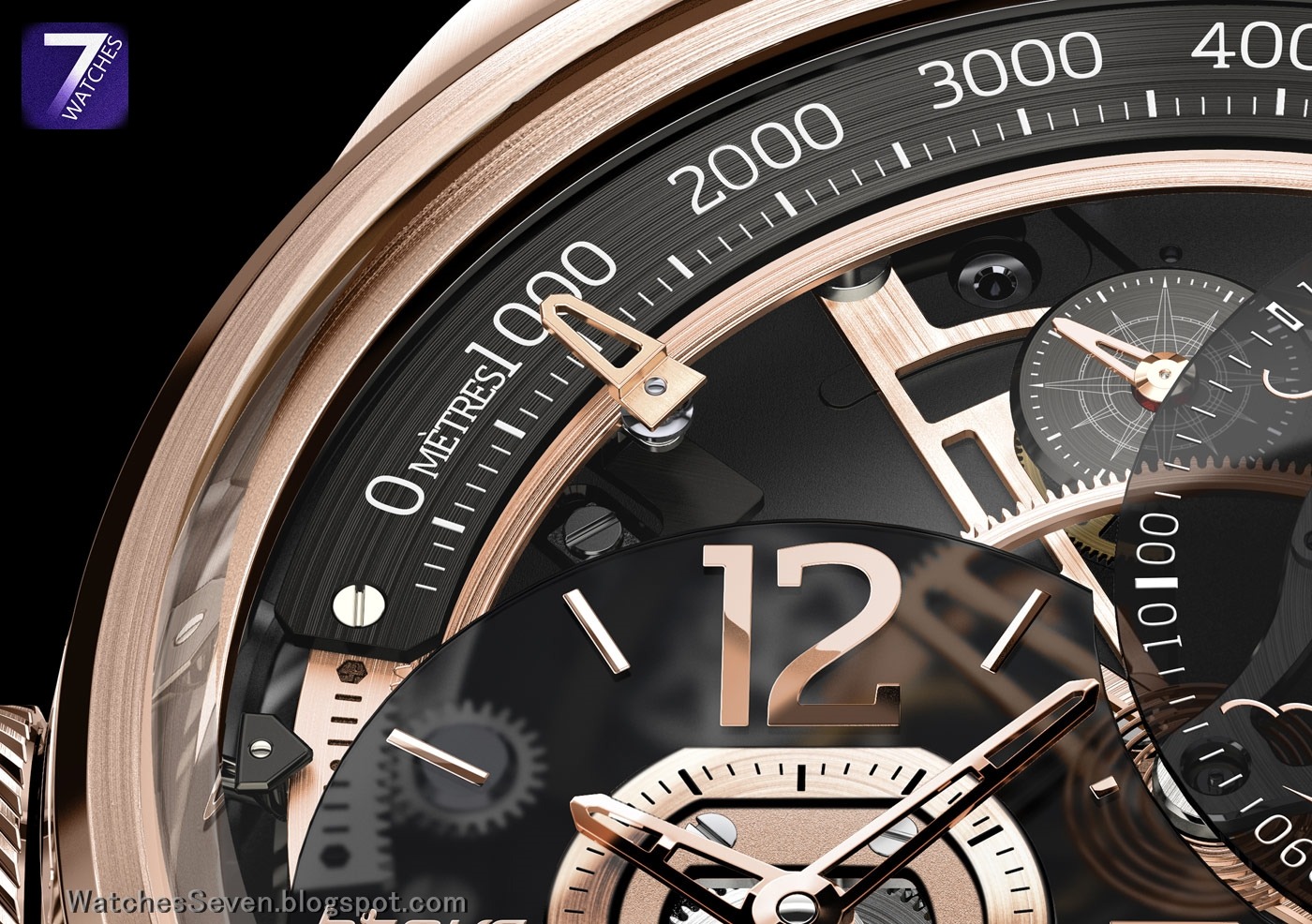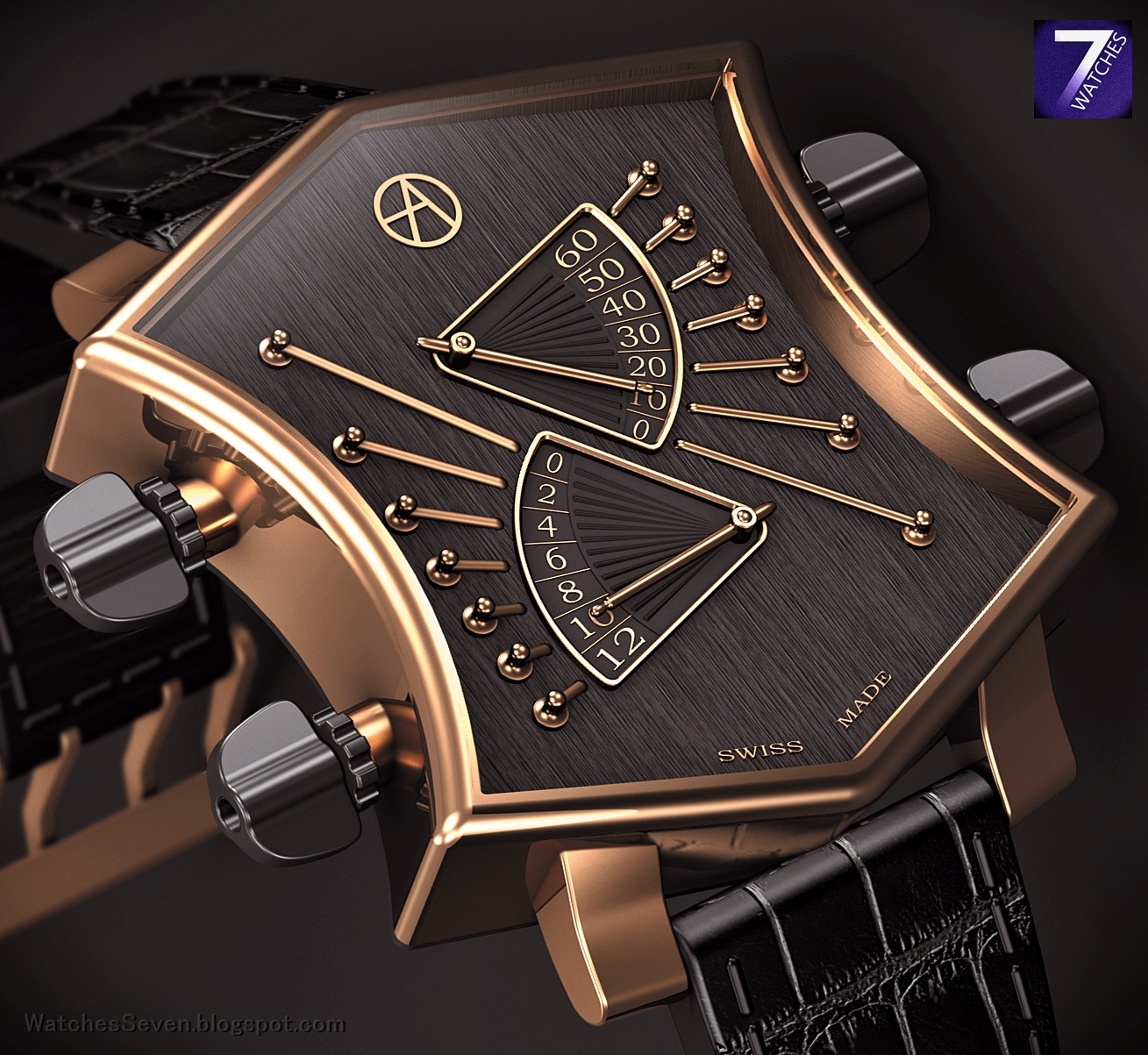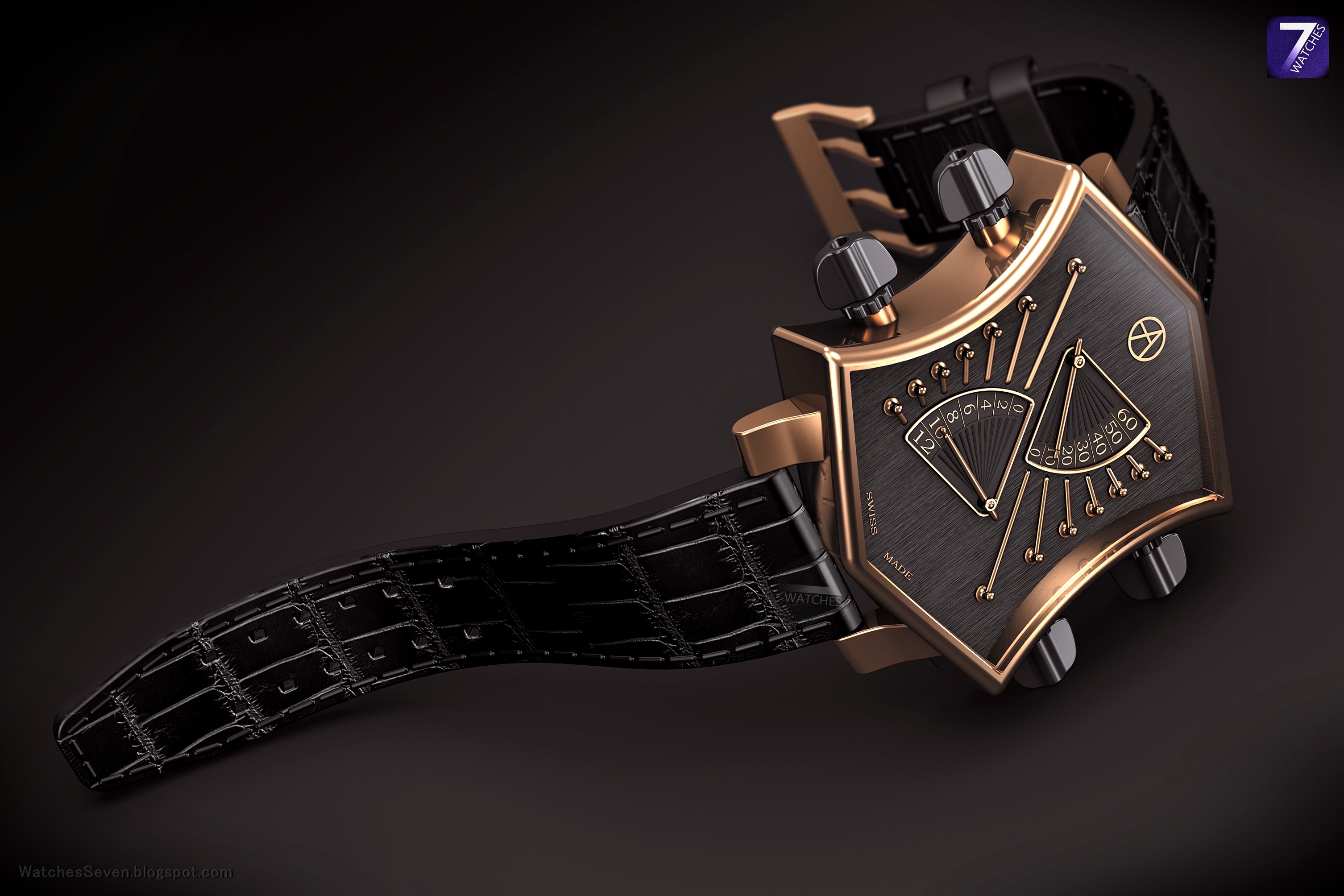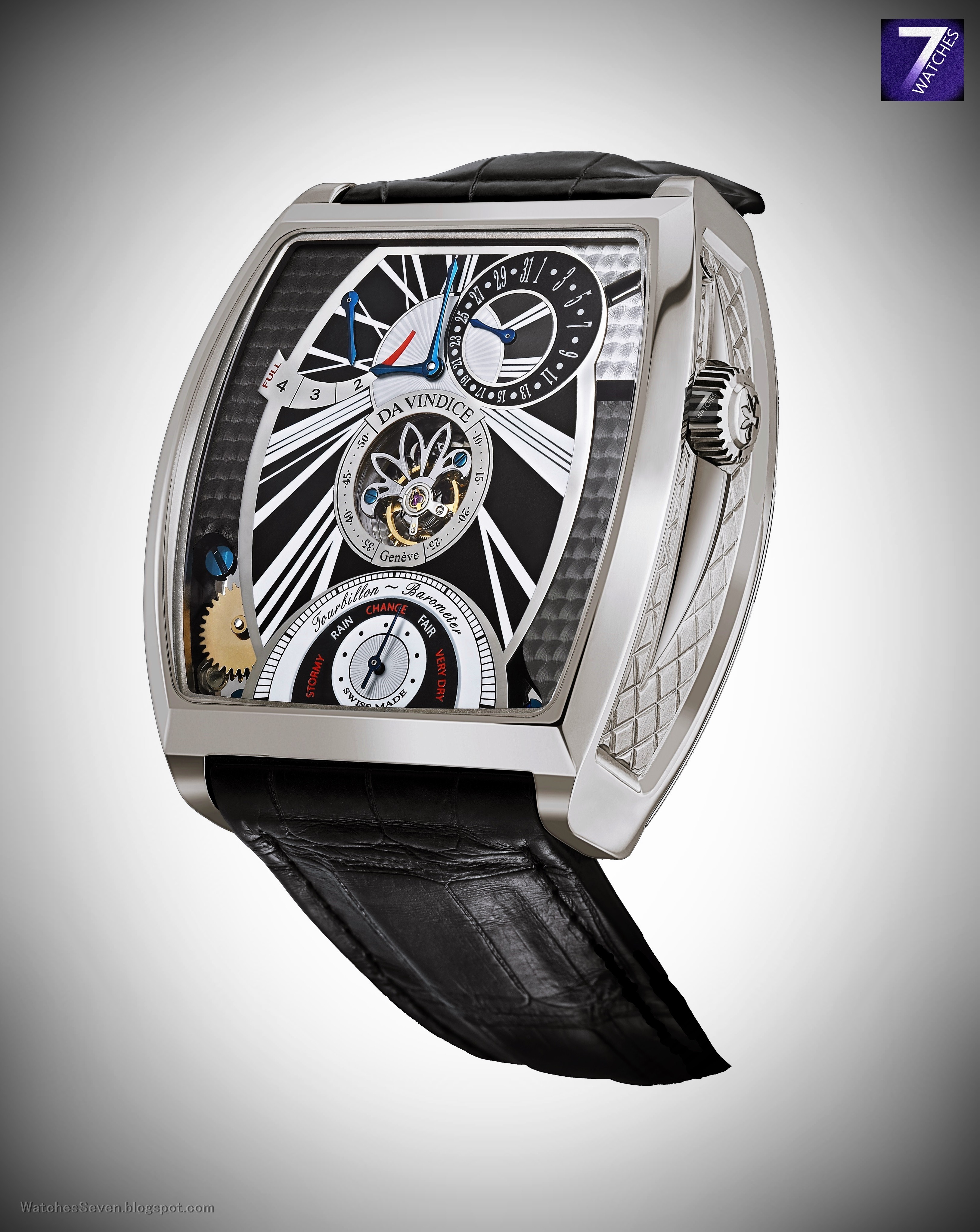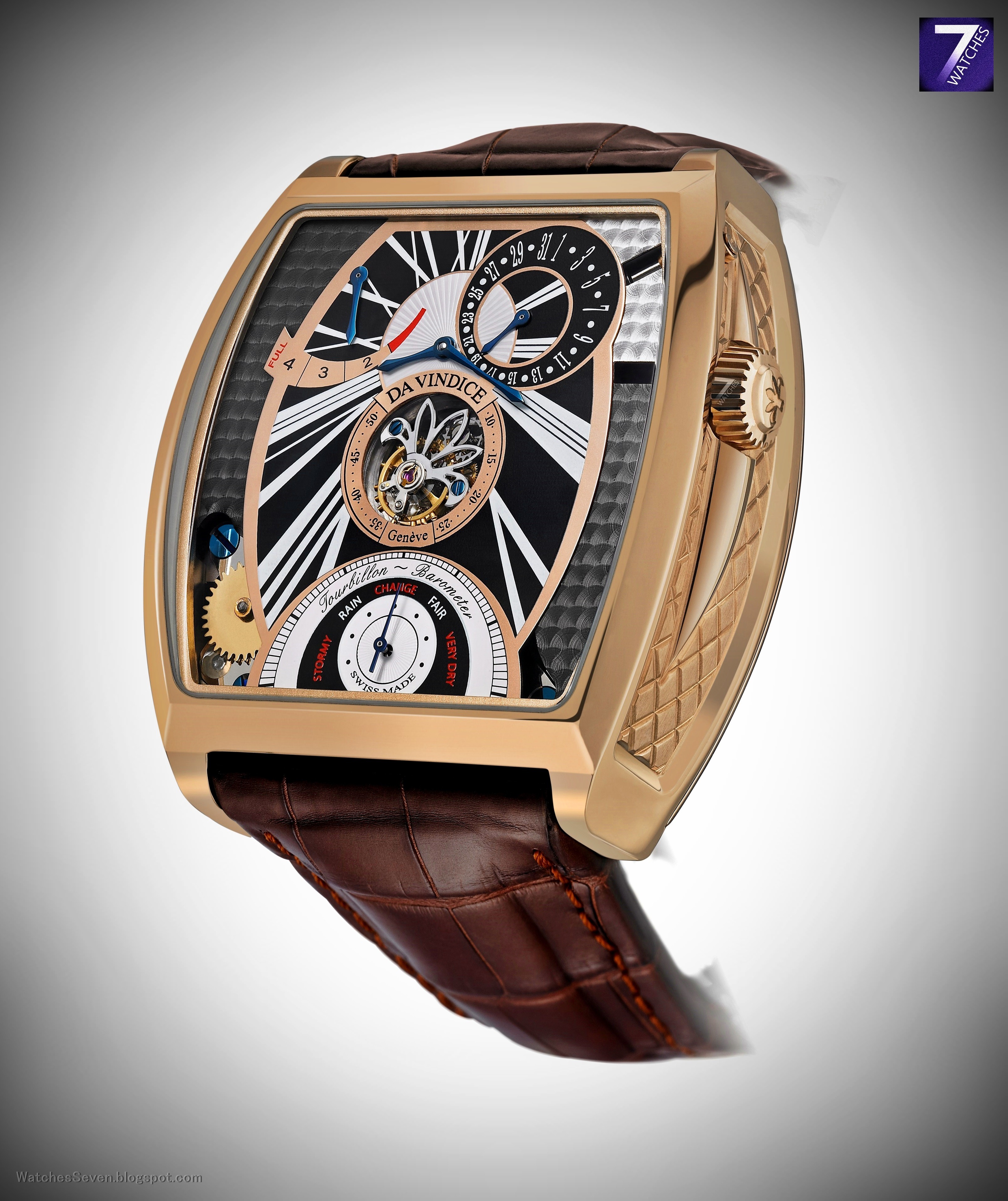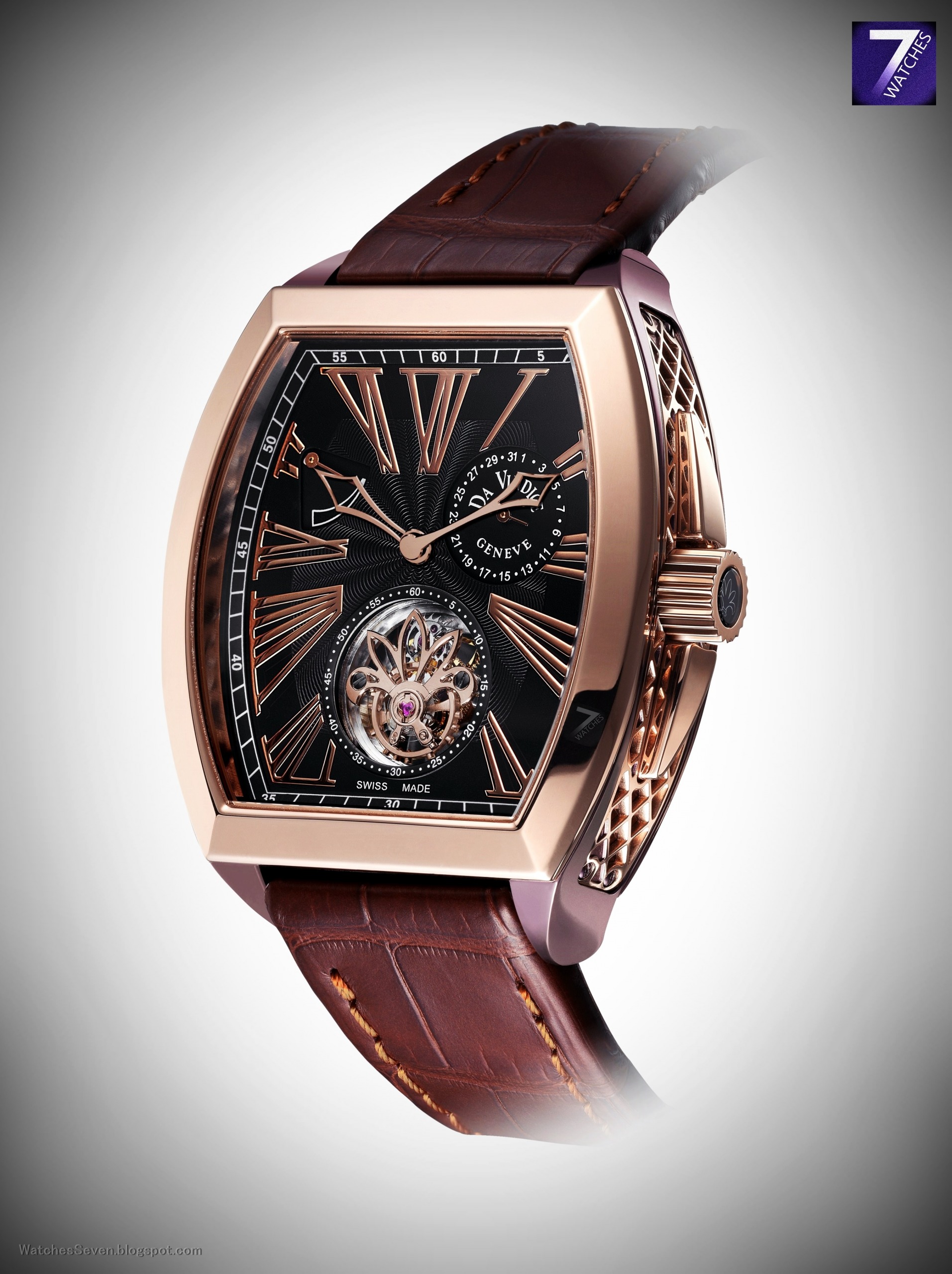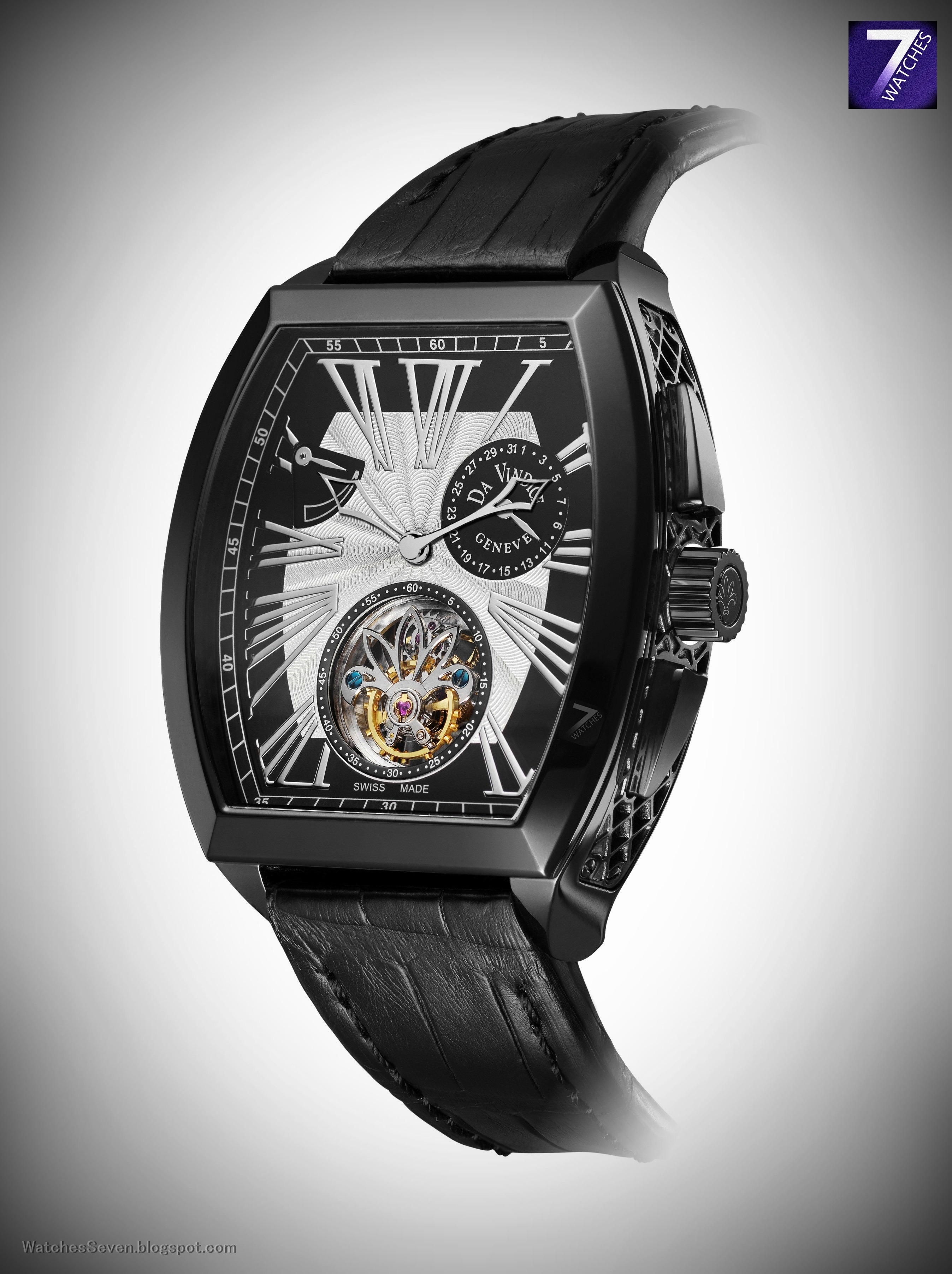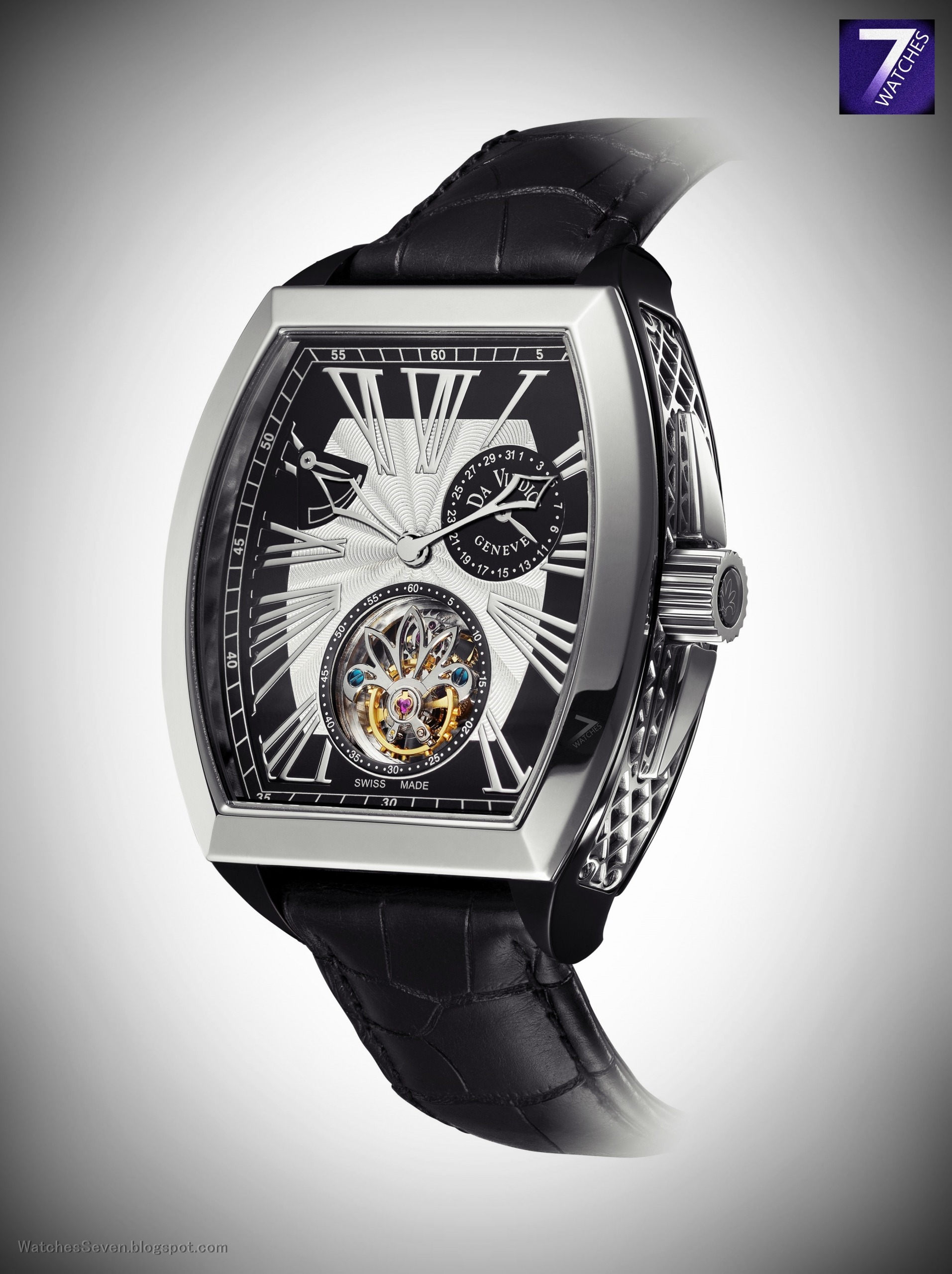Girard-Perregaux - BRIDGES Constant Escapement 2013
Click on the mouse wheel to see the large size BIG FOTO ....
THE CONSTANT ESCAPEMENT AT A GLANCE
A true technical revolution that stunned connoisseurs when some prototypes of the innovative mechanism were first presented, the Constant Escapement is now integrated into the movements driving the new models of Girard-Perregaux’s Haute Horlogerie collection. It has taken five years of research and development in virtually unexplored territory to consolidate and ensure the reliability of this significant step in watchmaking history.
The name, in addition to being a nod to one of the Maison's historical figures, Constant Girard-Perregaux, also refers to a holy grail in mechanical watchmaking that has perplexed watchmakers since the dawn of time: the constant force. Keeping true to its innovative vision, the brand decided to try using a quite novel approach to achieve it.
The concept presented on that occasion in the form of a functional mechanism was breathtaking, promising and poetic: the design was lightweight and graceful. However, the goal was far from being the result of art for art's sake, this was a new and convincing answer to the age-old preoccupation in watchmaking: the precision and regularity of a mechanical watch.
To get an idea of what is at stake and truly understand the importance of this innovation, it is worth recalling a few basic notions. The heart of a mechanical watch is ruled by the regulating organ, which manages the flow rate of the energy received from the barrel to drive the gear train and the rotation speed of the hands. The classic image is that of a faucet managing the flow of water.
The main factor is not so much the speed of the beats of this heart, the chosen frequency, but their regularity. The dance can be three in a bar or four in a bar, or even a thousand; but the essential thing is that it keeps the beat over time.
All sorts of systems had been dreamed up before the famous Swiss lever escapement was presented in wristwatches, and became more or less standard. Yet it suffers from one drawback: it can only give back the energy it receives from the barrel, which diminishes with time. This energy, which defines its timekeeping accuracy, is too fast to start with, and finishes like a machine running out of steam. A curve, the curse and the bane of watchmakers, illustrates the phenomenon: the curve of the amplitude, or angular displacement of a sprung balance wheel or a pendulum, which lessens towards the end of the run.
Click on the mouse wheel to see the large size ....
The principle of a constant force escapement is that whatever the energy supplied by the barrel, the escapement returns a constant energy to the regulator (balance wheel). To achieve this, they had the brilliant idea of integrating an intermediate device into the escapement, consisting of an extremely thin blade that stores the energy up to an invariable threshold bordering on instability, and then transmits it all instantaneously, before recommencing the cycle.
The inspiration came from an experiment, which anyone can repeat by holding a train ticket vertically between thumb and forefinger, bending it to form a C or an open round bracket. If you then apply pressure from the side you will feel resistance until the moment when the card snaps to the other side to mirror its former shape, and close the round bracket. Try it with a business card, it works every time.
Click on the mouse wheel to see the large size ....
The phenomenon of instability is known as buckling, which is the passage from a state of compression to one of bending. Spring specialists thus speak of buckled blades. Here, the silicon blade measures a quarter of a hair's thickness and plays the role of a microaccumulator of energy. This blade is flexed to a point as close as possible to its unstable state, and only needs an infinitesimal quantity of energy a micro-impulse given by the balance wheel (less perturbing than in a lever escapement) for it to snap from one state to the other, and in the process, to push the balance wheel forward, compensating for the variable energy of the barrel and liberating the same quantity of energy every time.
Unlike other systems that propose a constant force averaged over time, this is an authentic constant force escapement, as the force is instantaneous and continuous. And indeed, it is quite measurable using laboratory testing methods. Drawback: it can only give back the energy it receives from the barrel, which diminishes with time. This energy, which defines its timekeeping accuracy, is too fast to start with, and finishes like a machine running out of steam. A curve, the curse and the bane of watchmakers, illustrates the phenomenon: the curve of the amplitude, or angular displacement of a sprung balance wheel or a pendulum, which lessens towards the end of the run.
The principle of a constant force escapement is that whatever the energy supplied by the barrel, the escapement returns a constant energy to the regulator (balance wheel). To achieve this, they had the brilliant idea of integrating an intermediate device into the escapement, consisting of an extremely thin blade that stores the energy up to an invariable threshold bordering on instability, and then transmits it all instantaneously, before recommencing the cycle.
Click on the mouse wheel to see the large size ....
The inspiration came from an experiment, which anyone can repeat by holding a train ticket vertically between thumb and forefinger, bending it to form a C or an open round bracket. If you then apply pressure from the side you will feel resistance until the moment when the card snaps to the other side to mirror its former shape, and close the round bracket. Try it with a business card, it works every time.
The phenomenon of instability is known as buckling, which is the passage from a state of compression to one of bending. Spring specialists thus speak of buckled blades. Here, the silicon blade measures one sixth of a hair's thickness and plays the role of a micro-accumulator of energy. This blade is flexed to a point as close as possible to its unstable state, and only needs an infinitesimal quantity of energy a micro-impulse given by the balance wheel (less perturbing than in a lever escapement) for it to snap from one state to the other, and in the process, to push the balance wheel forward, compensating for the variable energy of the barrel and liberating the same quantity of energy every time.
Click on the mouse wheel to see the large size ....
Unlike other systems that propose a constant force averaged over time, this is an authentic constant force escapement, as the force is instantaneous and continuous. And indeed, it is quite measurable using laboratory testing methods.
The designers chose a symmetrical double construction. This was not for aesthetic reasons, but to balance the forces at the center of the balance wheel and avoid a concentration of constraints at that point in order to ensure totally unencumbered rotation.
The blade is formed in one piece with the frame which holds it by both ends and plays a decisive role in the very precise locking of the point of contact for the micro-impulse which will make it snap over. The relatively simple principle brings with it the need for absolute precision to put it into practice, which would have been impossible before the use of silicon and the arrival of new part manufacturing techniques, such as deep reactive ion etching (DRIE). The partnership with the CSEM (Swiss Electronics and Micro-engineering Centre) in Neuchâtel, Switzerland was decisive. Watchmaking experts and physicists carried out complex calculations to determine the characteristics of the blade, and the many factors governing the buckling point. In the end, the structure of the device incorporating the blade is monolithic. It is held in virtual levitation and undergoes no friction except at the moment of the impulse and the flexing of the blade. The energy of the blade is directly transmitted back to the balance wheel.
Click on the mouse wheel to see the large size BIG FOTO ....
Since the blade is the key element of the Constant Escapement, its natural vibration governed the choice of frequency: it will be 3 Hz (21,600 vibrations per hour) for the magic to work. But the future remains open, and tests have already been carried out at other frequencies. In any case, the challenge here is not about high frequencies.
The two escapement wheels look nothing like those found in a lever escapement. They have three teeth for a frequency of 3 Hz, and would need four for 4 Hz. The movement was designed to run for several days with a linear power reserve indicator on the dial, demonstrating the efficiency of this escapement in the long run. The energy is supplied by two barrels coupled in parallel (a new patented design): the cover and the ratchet are a single piece to maximize the thickness available and each drum contains two springs stacked in series. Two other patents have been filed: one for the blade naturally, filed back in 2008, the other for the incorporation of limit stops in a flexible system.
Click on the mouse wheel to see the large size BIG FOTO ....
While silicon was the material of choice for its ideal properties in the design and manufacture of the blade, it may be replaced by other materials for escapement wheels, while the movement blanks are in brass coated in black PVD for a contemporary look. The movement's aesthetic is meant to be technical, three-dimensional, but also to give a nod to tradition, with references to the brand's icons such as its famous three Bridges, laid out in a fresh way on its dial side, while on the back there are two arrow bridges.
To cap it all, this revolutionary movement looks ahead to after sales servicing right from the drawing board stage: the whole of the escapement is a module and can be handled by a specialized watchmaker.
-----------------------------------------------------------------
TECHNICAL SPECIFICATIONS
Reference: 93500-53-131-BA6C
Case: white gold
Diameter: 48.00 mm
Glass: domed anti-reflective sapphire
Crown: white gold with engraved GP logo
Dial: silvered with grained finish and rhodium-plated appliques
Hands: dauphine style
Case back: sapphire glass, secured with 6 screws, all inscriptions hand engraved
Water resistance: 30 meters
Girard-Perregaux movement MVT-009100-0007
manual mechanical movement
Caliber: 17½ ’’’
Frequency: 21,600 Vib/h – (3 Hz)
Power reserve: Approximately one week
Jewels: 28
Number of components: 271
Functions: hour, minute, central second, linear power reserve
Black alligator strap
White gold folding clasp
---------------------
www.facebook.com - Girard Perregaux Watches
-------------------------------------------
www.Girard-Perregaux.com
Diameter: 48.00 mm
Glass: domed anti-reflective sapphire
Crown: white gold with engraved GP logo
Dial: silvered with grained finish and rhodium-plated appliques
Hands: dauphine style
Case back: sapphire glass, secured with 6 screws, all inscriptions hand engraved
Water resistance: 30 meters
Girard-Perregaux movement MVT-009100-0007
manual mechanical movement
Caliber: 17½ ’’’
Frequency: 21,600 Vib/h – (3 Hz)
Power reserve: Approximately one week
Jewels: 28
Number of components: 271
Functions: hour, minute, central second, linear power reserve
Black alligator strap
White gold folding clasp
---------------------
www.facebook.com - Girard Perregaux Watches
-------------------------------------------
www.Girard-Perregaux.com


